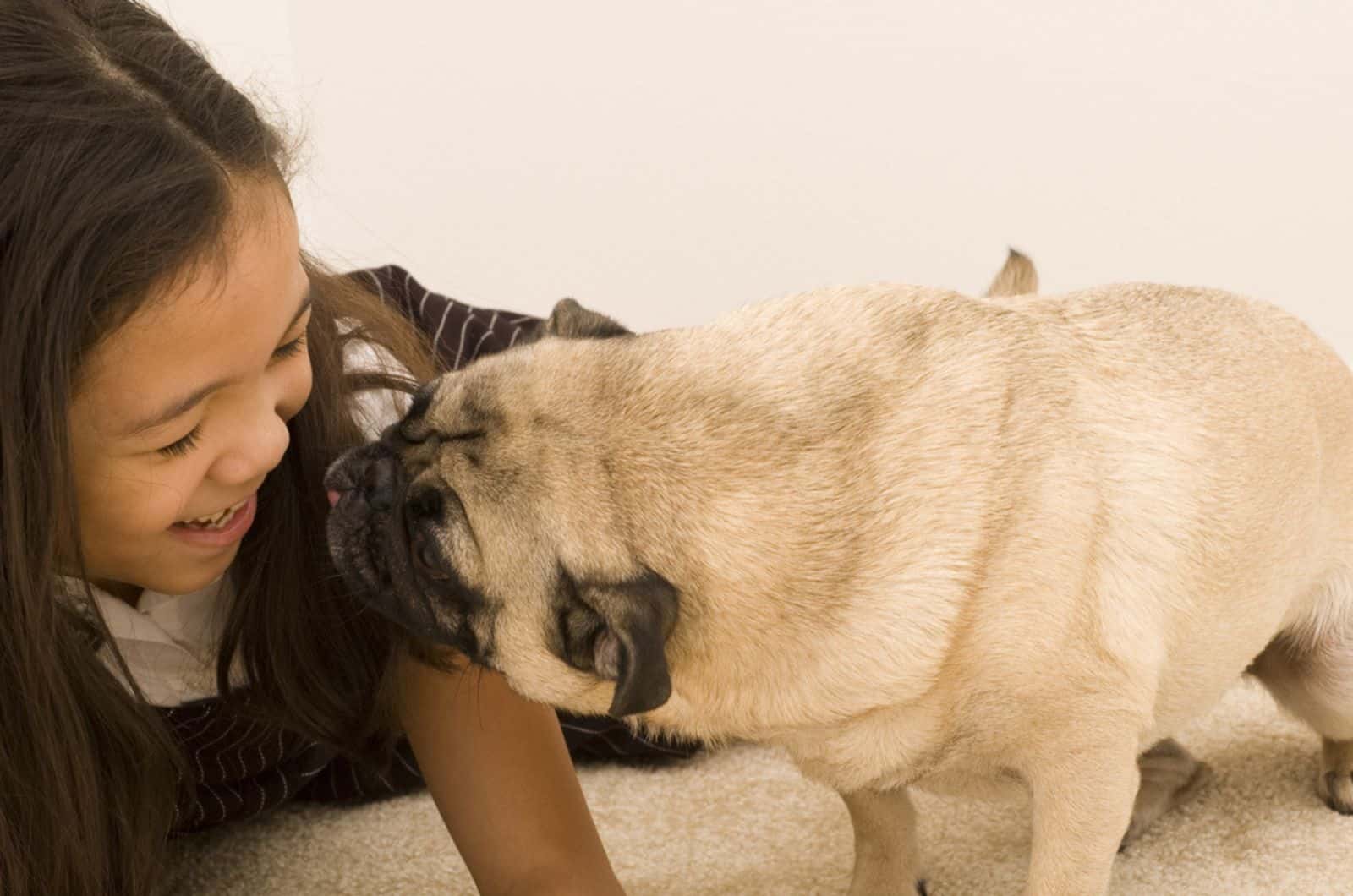We can agree upon the fact that some dog breeds are less likely to react to certain negative stimuli, and others have a shorter temper.
However, after all of these years of experience with dogs, I can say that everything depends on the upbringing of the dog, and genetics plays a minor role here.
When something unexpected happens, dogs may become aggressive. Aggression is a behavior that any dog can exhibit, but it is constantly based on what the dog perceives to be occurring to them.
When a dog acts aggressively, it almost always does so because it perceives some sort of threat. For instance, the threat might be to its physical safety, the taking away of something it values, or the frustrating impediment to something it genuinely wants to achieve.
Aggression can be employed to manage or lessen this difficulty. Theoretically, if provoked sufficiently, every single dog can and will exhibit violence.
Although it may appear that certain dogs are born with a tendency toward aggression, it is more correct to state that these dogs are born with hereditary traits that if left unchecked, may increase the likelihood of aggressive behavior.
Since aggression always involves a reaction, generally to a threat, a dog can certainly learn other ways to react.
There is no need for any dog to learn to use aggression improperly if these responses are managed throughout the dog’s life, beginning with breeding from well-balanced parent dogs and continuing with acquiring strong social skills as a puppy.
What Is Considered To Be A Dog Without Aggressive Traits?
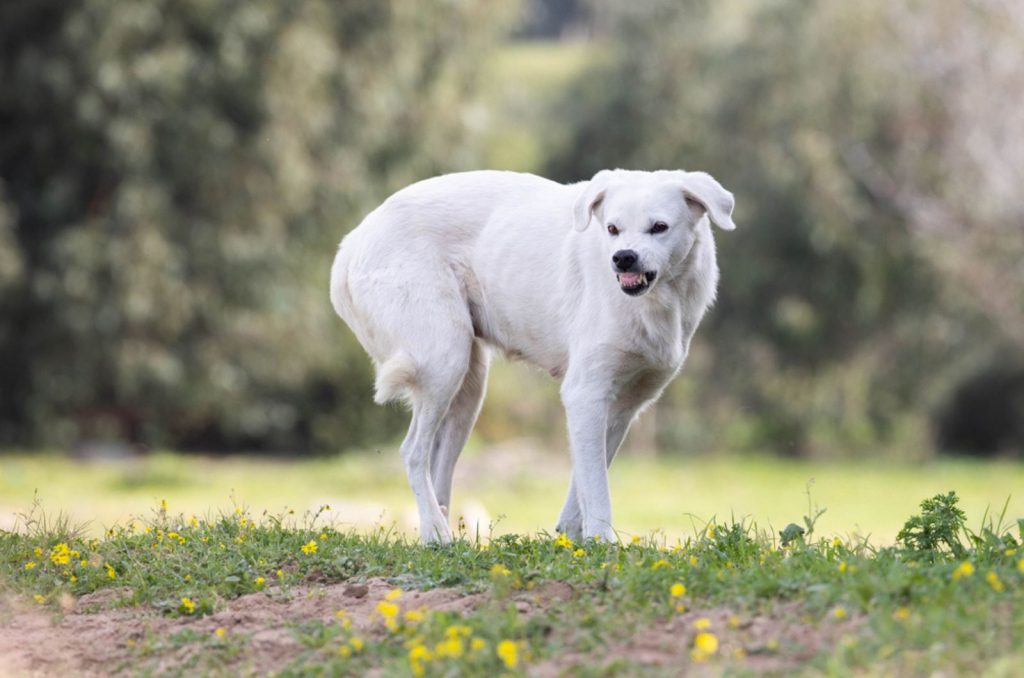
All animals naturally exhibit aggression as a behavior. Many times, people only view a dog’s aggressive behavior as problematic when it reaches extremes like biting, but it can also manifest in milder forms like growling, baring teeth, and snatching at the air without coming into contact.
Bite severity can range from gentle tooth-to-tooth contact to significant harm. The dog can transmit a variety of goals through aggression, which is the external manifestation of an emotion.
Aggression is a behavior that dogs have access to, among several, that they might use to handle the difficulties they face on a daily basis rather than something that comes on and goes off suddenly.
Several of these behaviors are passive, and we only refer to them as “aggression” when the dog actively tries to handle the situation rather than passively trying to avoid it by moving away or displaying their displeasure.
A dog has a wide range of choices available to it when it must deal with a certain aspect of its life. Simply stated, some of those possibilities include aggression.
Dogs that simply do not exhibit any traits of aggression are considered to be least aggressive dog breeds, or dog breeds without aggressive traits.
The List Of Least Aggressive Dog Breeds
To make this as simple as possible, this extensive list of least aggressive breeds will hopefully do the trick for you, and help you choose the perfect dog for you.
There are many dog breeds here that are of different sizes, and of different backgrounds and personality traits, and the only thing you have to do is choose the perfect one for you.
You won’t make a mistake by choosing any of these since they are all good dogs that make strong bonds with their owner, and are great with small kids.
Most of the dogs from this list are also low maintenance, but they do need early socialization to maintain their image of being one of the least aggressive dog breeds.
Any dog with regular exercise and a good dog owner has a predisposition to be of a friendly nature, but these dog breeds that I have picked out have the ‘it’ factor!
1. English Bulldog
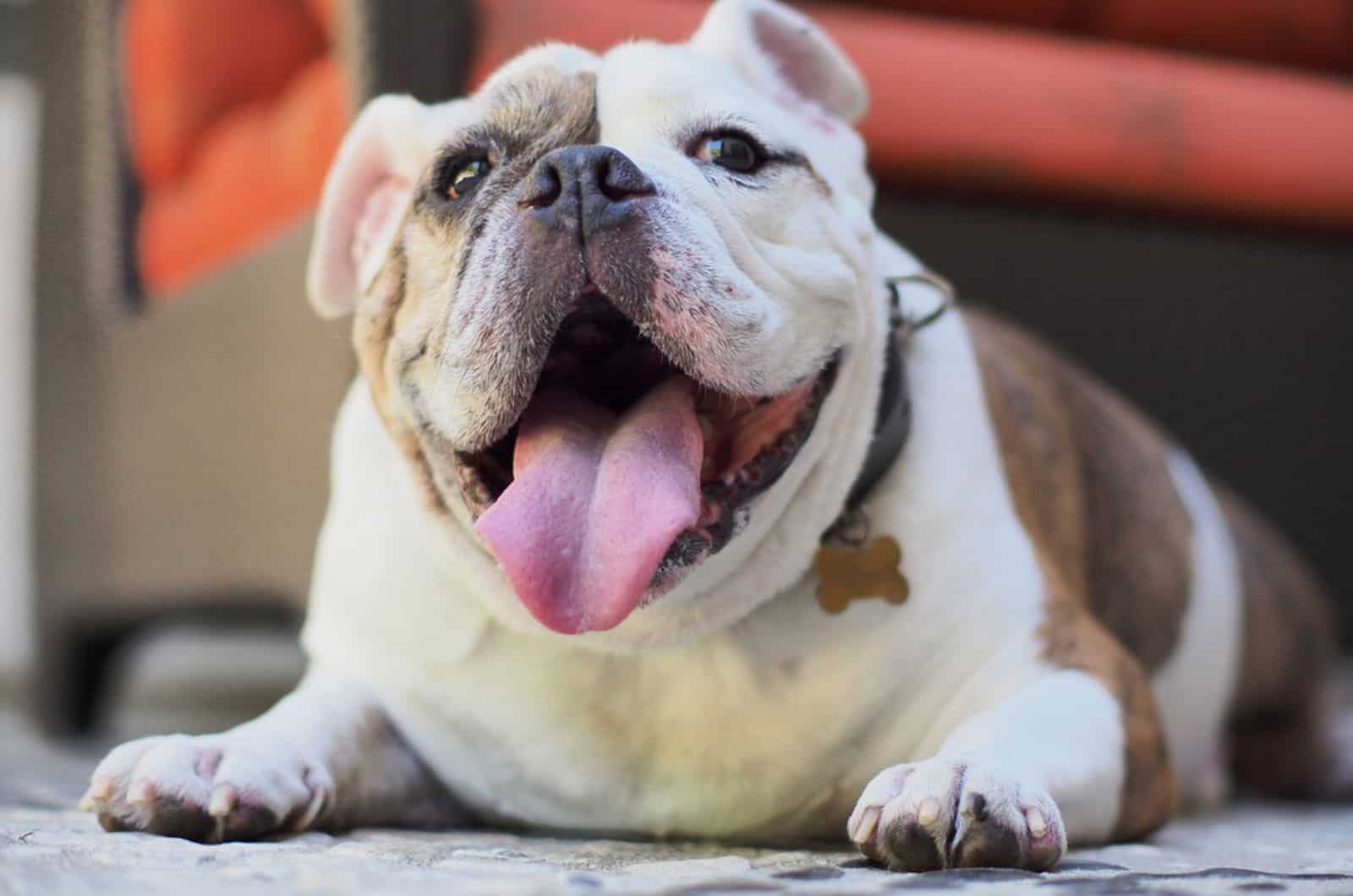
Along with their wrinkly face, these strong doggies have quite a pushed-in snout, which is one of their distinguishing characteristics. These dogs are adorable and sociable animals. Bulldogs show their beloved dog owner and their household members a lot of love and patience.
They were listed as the sixth most popular dog in the U.S. in 2007 by the American Kennel Club. Due to their protective nature, strong constitution, and territorial tendencies, these dogs make ideal watchdogs.
The stereotype of these dogs being sluggish and indolent is untrue. They might experience breathing difficulties that make them feel out of breath, and they might require longer time to recover.
They can, however, run quickly, and will probably maintain their speed for five to ten minutes. Their strength is definitely not endurance.
Even though they don’t enjoy regular exercise, a daily walk of 30 minutes or other exercise will help keep your canine companion healthy.
A benefit for folks who want to raise these doggies is that they adapt to living in apartments, along with the fact that they don’t need as much exercise as other dogs (like Retrievers) do. The English bulldog comes in a variety of colors, too!
The average of the male and female breed samples is 23 to 25 kg (51 to 55 lbs), and 18 to 23 kg (40 to 50 lbs), respectively. The breed has an estimated lifespan of 8 to 10 years. Breed-specific average height is 12 – 16 inches (or 31 – 40 cm.).
2. Bernese Mountain Dog
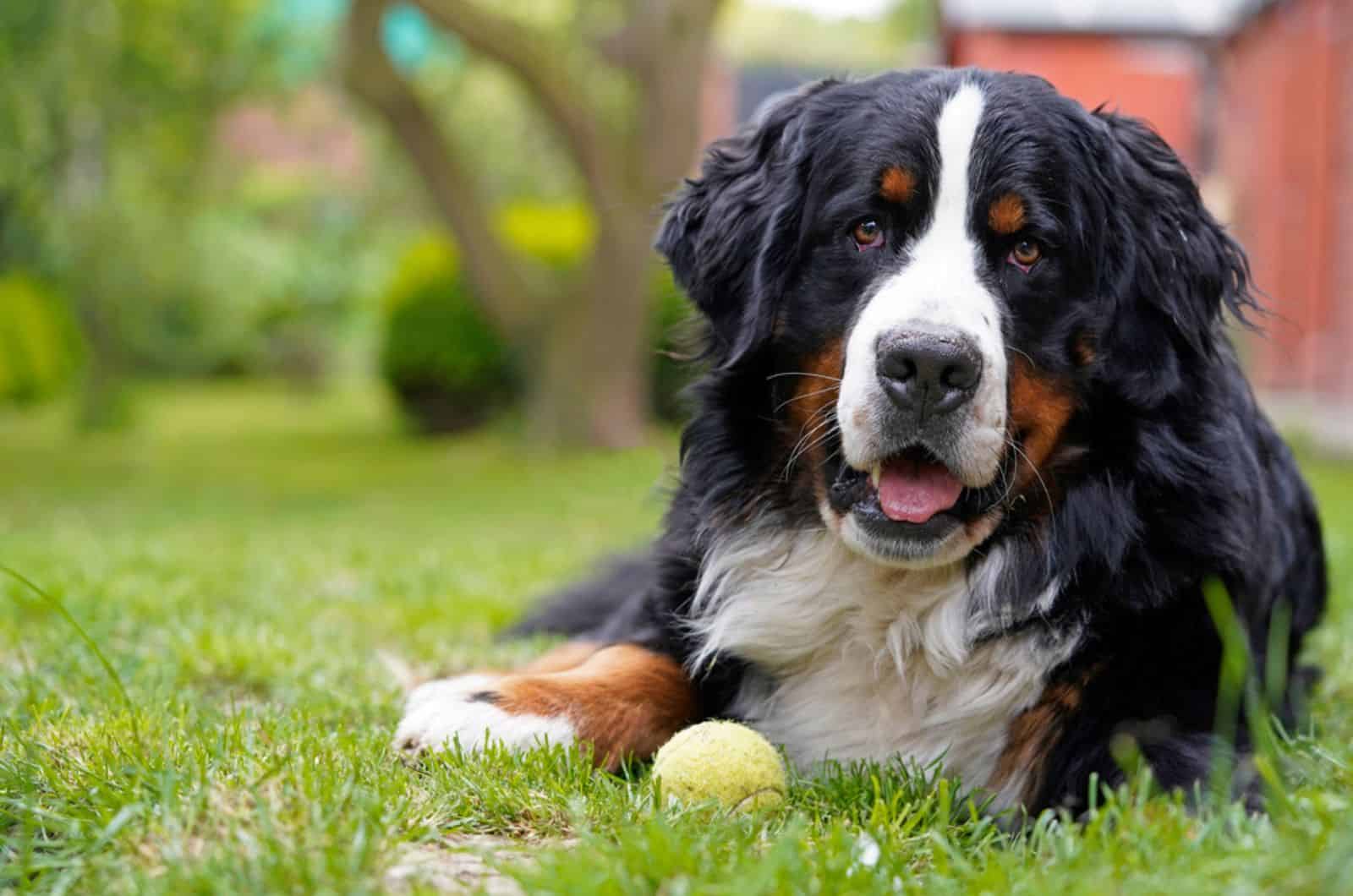
The dog breed that smiles all the time, or the Bernese Mountain Dog, is the dog breed which doesn’t have a single evil bone in its body. They were once working dogs, but now their full-time job is to make their owner happy.
This breed, which has its origins in the Swiss Alps, is one of the five varieties of the Sennenhund-type of dogs that followed the alpine shepherds. These big dogs are ideal for homes with a yard.
It would be ideal if you had a farm. They are peaceful, obedient, and laid back despite their amazing size – being a large-breed dog, males can weigh from 86 to 110 lbs, and females can weigh from 79 to 106 lbs.
These canines will make excellent companions for families with young children because they are kind and patient.
They would be the perfect choice for you if you were searching for a service dog or simply some help around the house because they enjoy working at various tasks, they are alert, and they are easygoing.
This breed’s degree of shedding is a drawback. These dogs shed a lot, particularly twice a year, during shedding season. They have a double coat; therefore, regular brushing is advised, at least once a week.
They have a tri-colored coat with black, red, and white colors. Their total height is 58 to 66 cm (23 to 26 inches) for female representatives and 64 to 70 cm (25 to 28 inches) for male dogs. This bread has a 7 to 8 year shelf life on average.
They are a wonderful temperamental watch dog that will show you daily how loyal they are.
3. Newfoundland
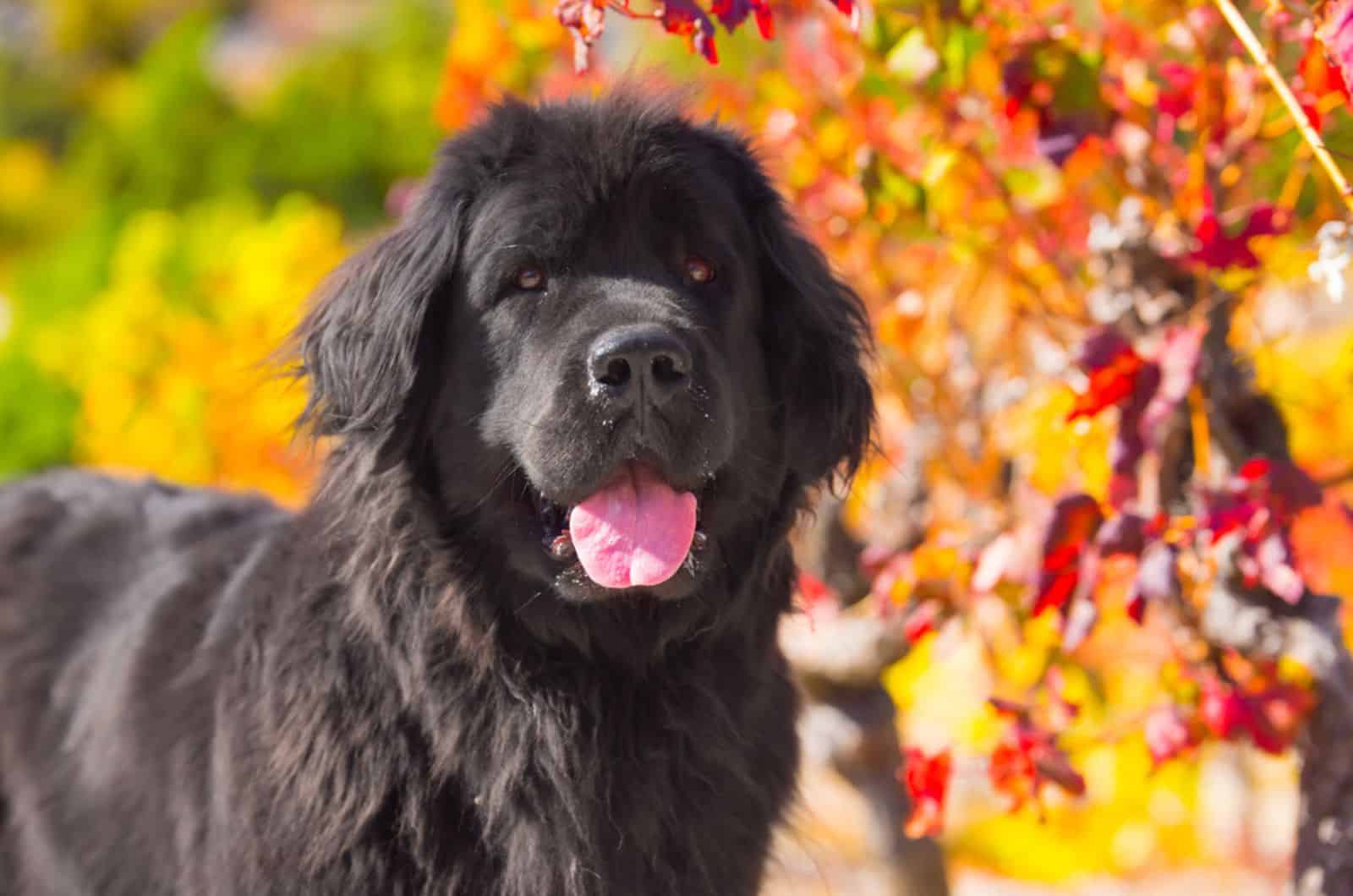
These dogs were developed in Newfoundland, Canada, as working canines for fishermen.
You might be enthralled by their appearance and huge size – male dogs can weigh up to 145 pounds, and grow to a height of 28 inches, while female dogs might grow to a maximum weight of 123 lbs, and a height of 26 inches.
These dogs are sweet, attentive, and fiercely devoted despite their size. They might also try to sit around your feet despite their enormous size. Although they don’t “cuddle” as much as some people would want them to, they adore spending time with their family, and are extremely loving.
They typically exhibit good manners and extreme serenity around strangers. They can be fiercely protective of their loved ones; thus, they won’t hesitate to defend them if their master or another member of the family is at risk.
Additionally, these dogs are well known for saving individuals from drowning because they are excellent swimmers. The energy levels of these canines are average. Although they are frequently quiet and peaceful, they can be lively.
Although Newfoundlands do shed, their rates are not the highest. However, it is highly advised to brush them frequently in order to eliminate any dead hairs. These dogs are trainable; therefore, you might want to start training your pet when it is still a puppy.
They frequently bark for no apparent cause, and they have powerful, deep barks. However, this tendency can be changed with the right training.
These dogs’ coat is available in the following hues: black, white with black spots, gray, brown (not accepted in Canada), and black .
4. Pit Bull (Or The Staffordshire Bull Terrier)
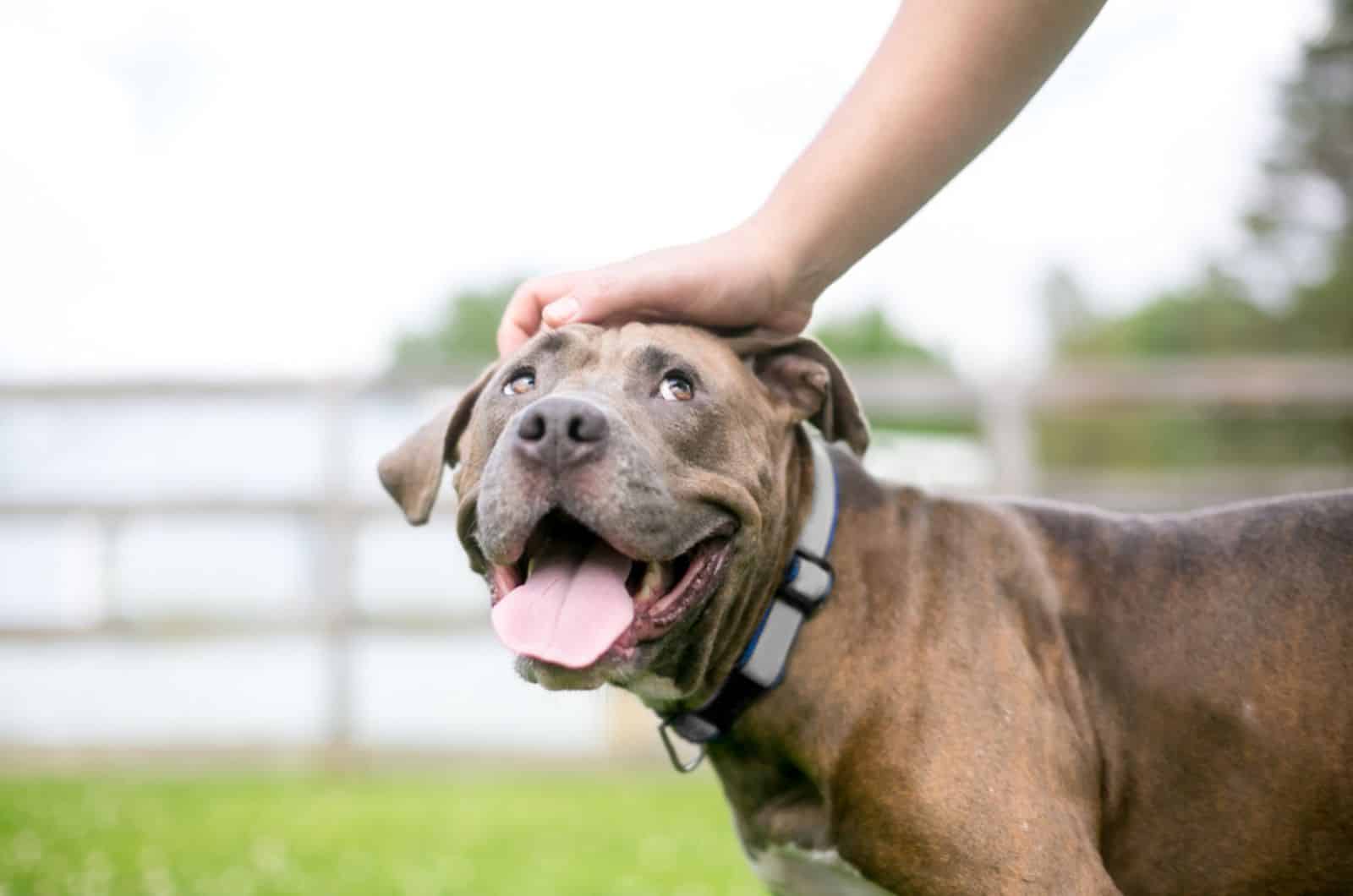
The Staffordshire Bull Terrier’s reputation is based more on rumors than on solid evidence, how it behaves, or how it seems. It is frequently misidentified.
In actuality, a lot of aggressive dogs are bull-breed hybrids. The purebred Staffie presents entirely new challenges. It is known as “The Nanny Dog.”
This breed’s reputation for being excellent with youngsters led to the development of that moniker. According to several welfare and rehoming organizations, the Staffie is the dog that would be best suited for a home with small children.
They are among the best family dogs of all dog breeds in the opinion of these organizations and rescue facilities. They make strong bonds with all family members, but especially with small kids. Also, they are high-energy guard dogs, even if they are among the least aggressive breeds.
The only breed whose description and standard includes the words “completely loving to its family” and “absolutely reliable” is this one… this certain breed that too many people criticize as being murderous, ruthless, and violent.
The suitability of the breed for young children is described by the Kennel Club… one of just two breeds to receive this endorsement. So, why has it become such a devoted and caring family dog, and how did it get to be so wonderful with kids and adults?
5. Cavalier King Charles Spaniel
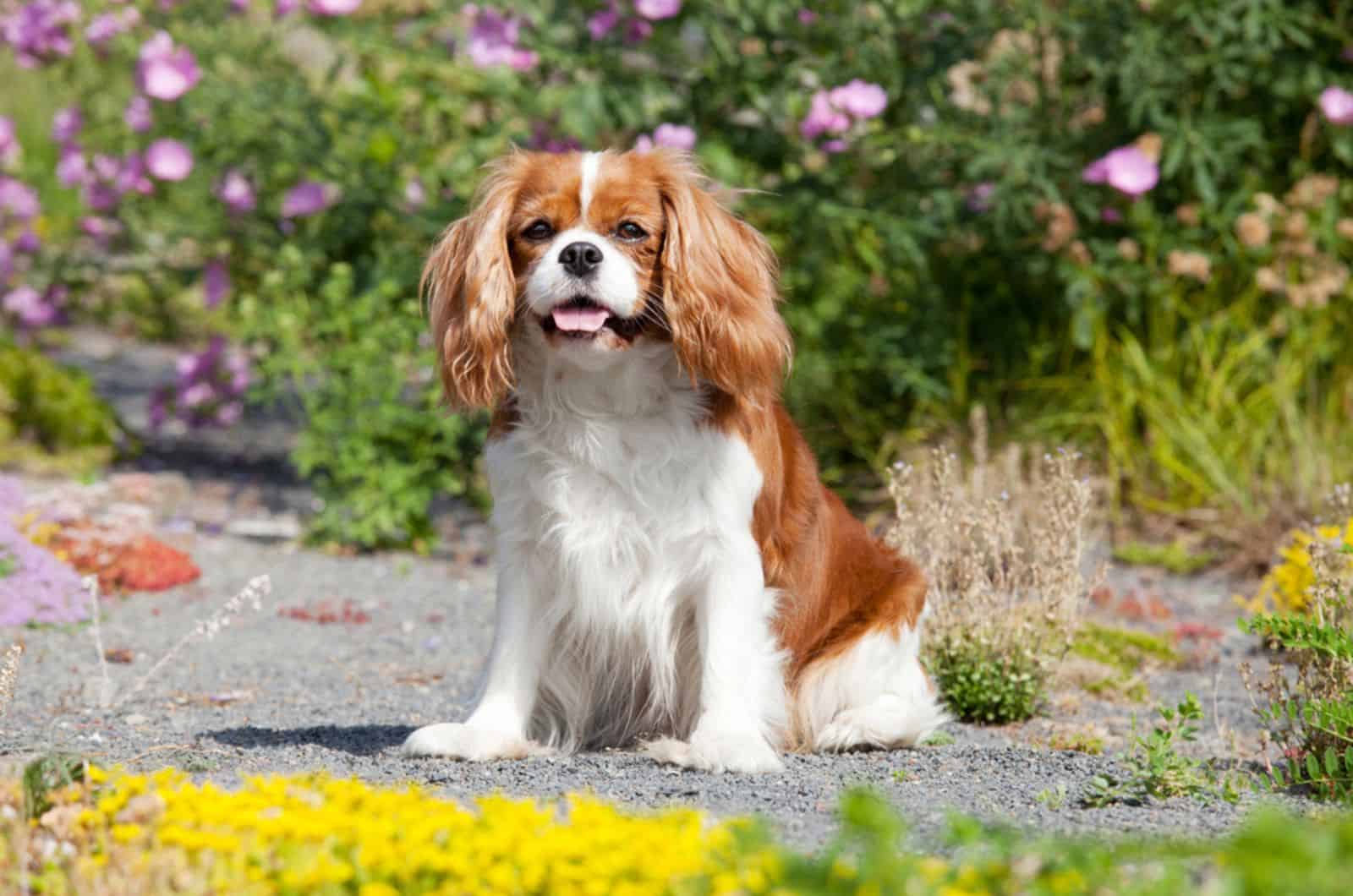
This small breed, and often, in the last few years, toy breed, has its roots in the UK, and is now the 17th most popular purebred in the U.S. These canines have a kind, attractive, and peaceful appearance.
These dogs may have been called after King Charles II because he was so enthralled by them. Along with their cleverness and playful nature, these dogs’ beautiful and silky coat also captivates us.
They interact well with other animals, kids, and people since they are amiable and affectionate dogs. They are quite adaptable, and can quickly acclimate to new environments if necessary.
You can break up a 45 to 50 minute walk into multiple, shorter strolls of 10 to 15 minutes apiece.
These breed’s color variants include black and beige, blenheim, red, and tri-color. The typical length of the breed’s lifespan is 9 to 14 years, and its maximum weight and height range from 5.9 to 8.2 kg (13 to 19 lbs) and 30 to 33 cm (12 to 13 inches), respectively.
6. Brittany Spaniel
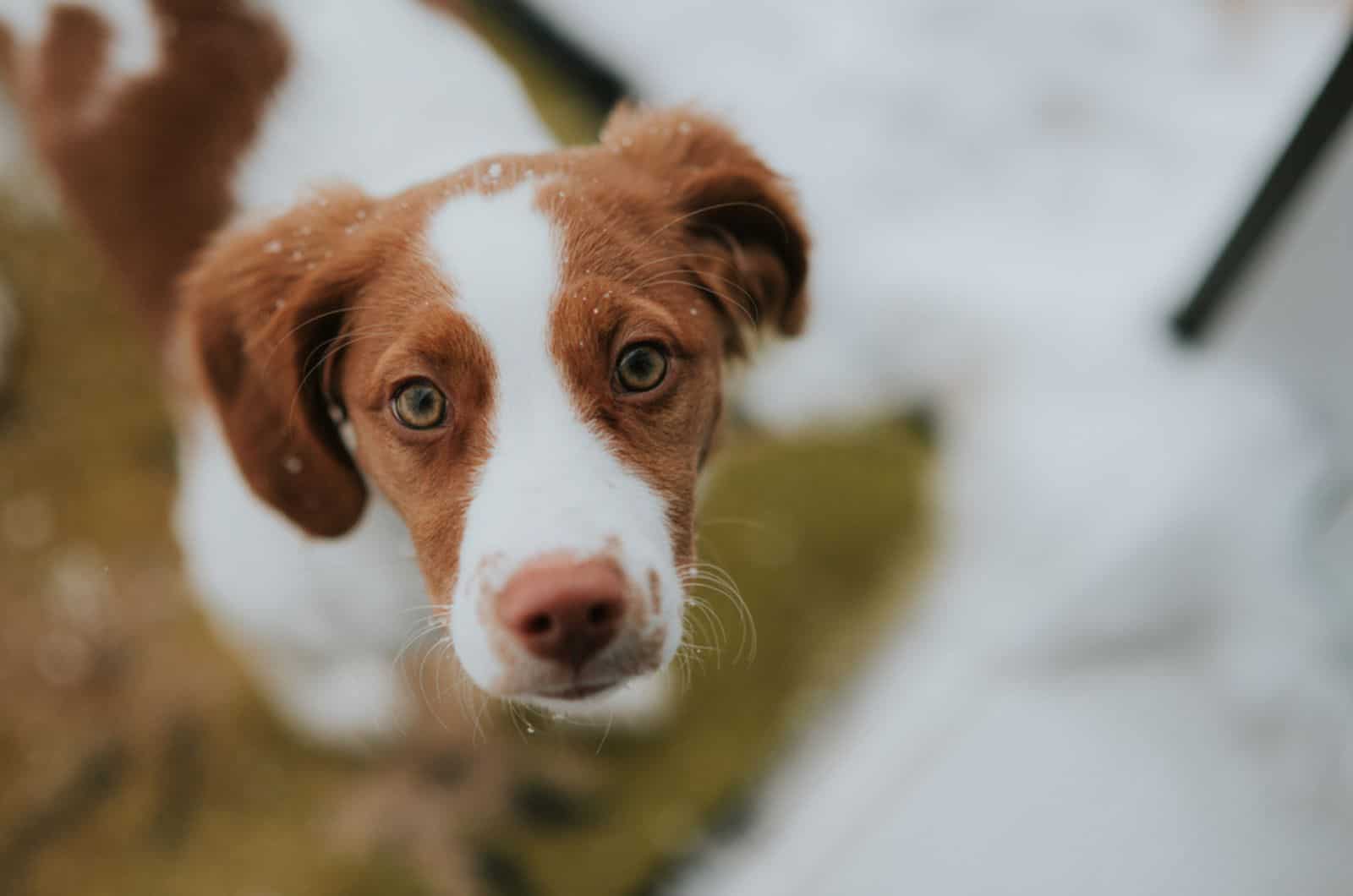
This breed’s ancestors were developed as gun dogs in a French province, where they were selected for their propensity for retrieval.
The breed was accepted by the AKC in 1934 after being recognized in France in 1907. The second component of the name “Spaniel” was later dropped in 1982. They are extremely devoted and loving to their owner.
They get along nicely with strangers and other animals, and they are not violent. If we had to assign a rating to their level of vigor and liveliness, we’d say they’re pretty high.
Because you’ll have to be active, it is necessary to take into account their great energy. This breed is a fantastic choice for you if you are into playing games, particularly fetch games, and also spending quality time exercising.
However, if you do not spend at least an hour a day interacting with your dog (intense exercise), your furry buddy may get narcissistic and destructive.
Brittanys are bright, easily trained, and quick to pick up new skills. Their shedding rate can be categorized as moderate. Their legs and belly are feathered, and their coat is wavy.
Your life will undoubtedly be improved by these dogs, which will also make you more energetic. These dogs’ coat comes in the following colors: tricolor, orange reddish, liver roan, black roan, and black with white markings.
They live from 12 to 16 years on average. The maximum height of this breed is approximately: 47 to 52 cm / 19 to 20 inches for male dogs, and 46 to 51 cm / 18 to 20 inches for female ones. The overall weight that the male canines can attain is 14 to 18 kg / 31 to 40 lbs (for the females).
7. Pug

Due to Queen Victoria’s ardor for them, they gained a great deal of popularity in the Netherlands, and later, in the 19th century, a great deal of love from the Royal family within the United Kingdom.
Another name for Pugs is Dutch Bulldogs. These dogs’ wrinkles, flat muzzle, curly tail, and extremely muscular body give their face highly distinctive traits. The lower teeth of these dogs are slightly longer than their top teeth, which is another facial characteristic.
As these dogs are friendly and devoted to their owner, you should be ready for wonderful family moments and fun if you choose to raise one of this breed. They are fiercely loyal to their owner.
You won’t get bored being around them because they get along nicely with family members, kids, and other pets. However, we must add that having a Pug has its drawbacks, like their degree of shedding.
To start taking care of its coat (bear in mind that there are a few Pug colors), you must regularly brush it and bathe it at least once every three weeks regardless of the breed you choose. These adorable canines don’t bark often, which makes them perfect for apartment life.
They are also adaptable canines and, if necessary, will be able to adjust to their new environment more quickly than other dogs. This does not imply that you will adjust to giving them less attention.
You should be aware that like other breeds, Pugs can experience separation anxiety. The breed has a 12 to 15 year lifespan on average.
8. The Great Dane
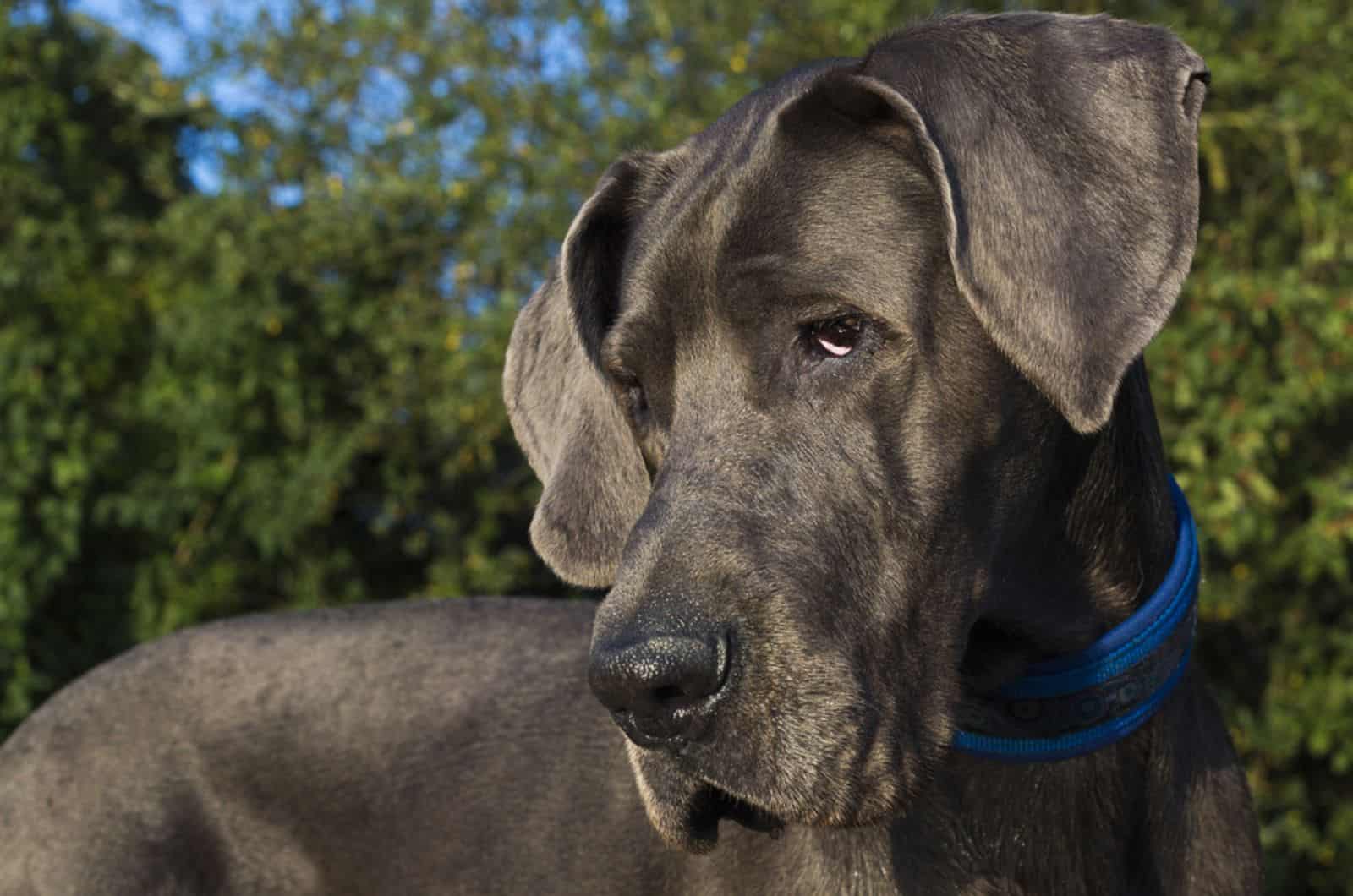
This magnificent breed, which dazzles with its size, was developed in Germany as a hunting dog. These canines’ ancestors date back to the Middle Ages.
This breed may cause some people to feel anxiety because of their size, yet many people adore them because they have come to realize how kind and peaceful these animals actually are.
Great Danes form close relationships with their owner, and also get along well with kids, which makes them excellent family and companion dogs. They can work well with other dogs, particularly if they were raised together.
However, if they are unfamiliar, some members of the breed may become aggressive toward other dogs. Due to their size, especially in a small apartment, your gorgeous paw giant may be a little clumsy; therefore, you may wish to teach them some fundamental manners.
Although they might be more active as puppies, older dogs tend to be placid and a little sluggish. Obviously, you still have to set aside some time for frequent walks, but you also need to be cautious not to overwork your four-legged pal.
Fortunately, this breed doesn’t need a lot of grooming, which is good news for the majority of you who prefer it. They might benefit from a little weekly brushing in the way their coat grows.
Great Danes really aren’t renowned for being barkers, but when they bark, their bark is quite loud and deep. This breed’s lifespan is 8 to 10 years on average. The male adult dogs can weigh from 54 to 90 kg (119 to 198 lbs), and from 45 to 59 kg (99 to 130 lbs).
9. Beagles
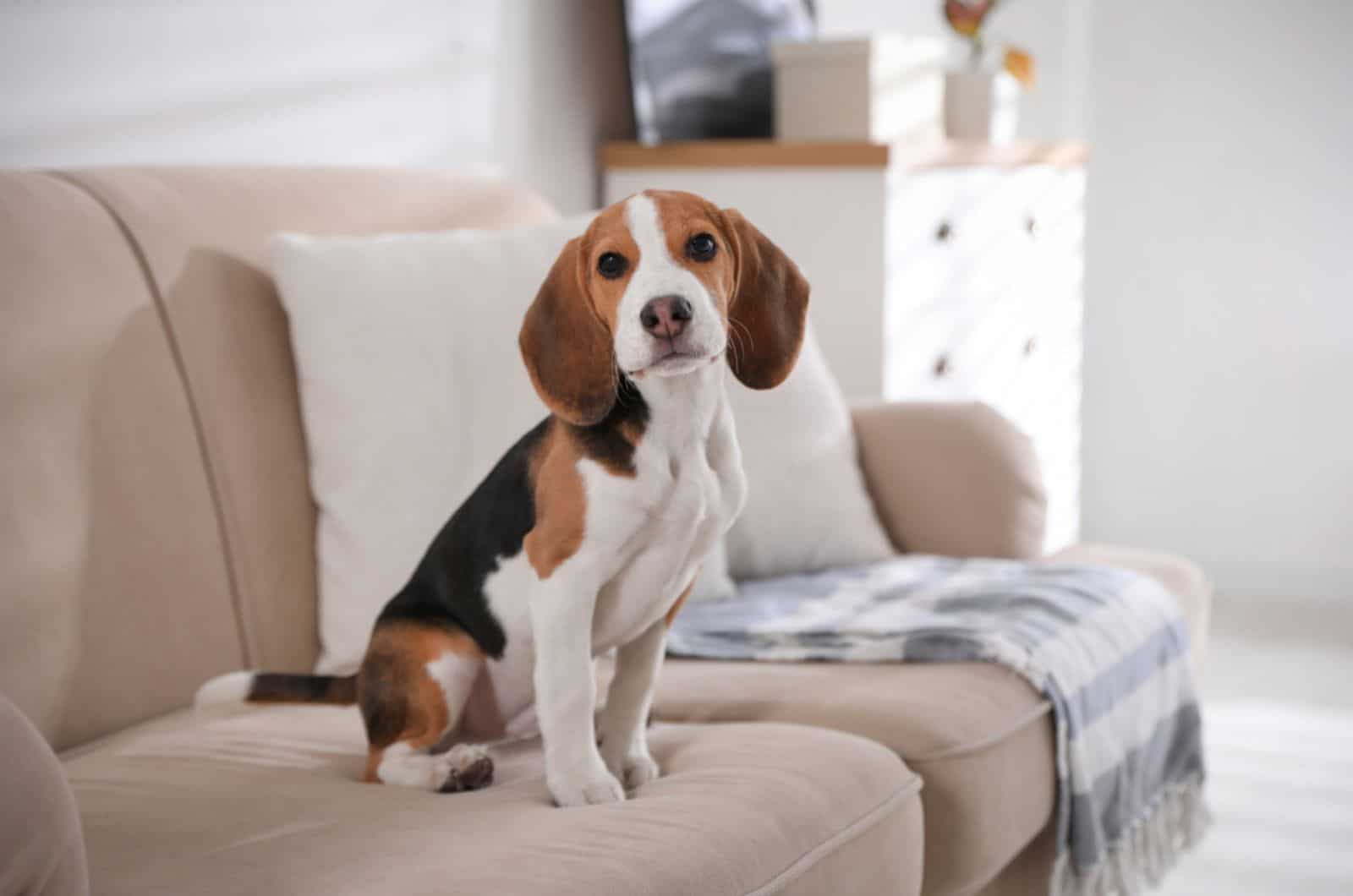
The so-called beagling, a small scent hound breed that was developed to hunt hares, has a keen sense of smell and exceptional tracking abilities.
The Beagle is described as the “main breed utilized as a detecting dog for illegal agricultural goods and commodities in detention around the world” in some publications. That is not surprising to us because Beagles are not only gentle and sociable, but also extremely intelligent.
They are friendly, lively, and non-aggressive toward young children, so if you’ve got kids, this dog will be a great choice for you. They enjoy investigating their surroundings, and will truly enjoy any game that involves diverse smells because of their keen sense of smell.
If you reside in an apartment, these dogs often growl and wail, which could be an issue for you. You might need to provide training if you wish to change this behavior.
Even though they might occasionally be stubborn, Beagles are trainable. Beagles are thought to be clean canines that don’t need to be bathed frequently. As their coat gets thicker in the winter, they shed more frequently in the spring. Since their coat is short, their hair won’t be very obvious.
These pets will look forward to your attention, and they will enjoy having you around. If they feel abandoned, they might get anxious about being separated from you, so take that into account when making a decision.
There are three different color combinations for Beagles: tri-color, white blended with black, and tan/chocolate. This breed has a 12 to 15 year lifespan on average.
Male representatives may weigh from 10 to 11.3 kg (22 to 25 lbs), while female representatives may weigh up to 9.1 kg (20 to 23 lbs). The breed’s maximum height ranges from 33 to 41 cm (13 to 16 inches).
10. Rough Collie
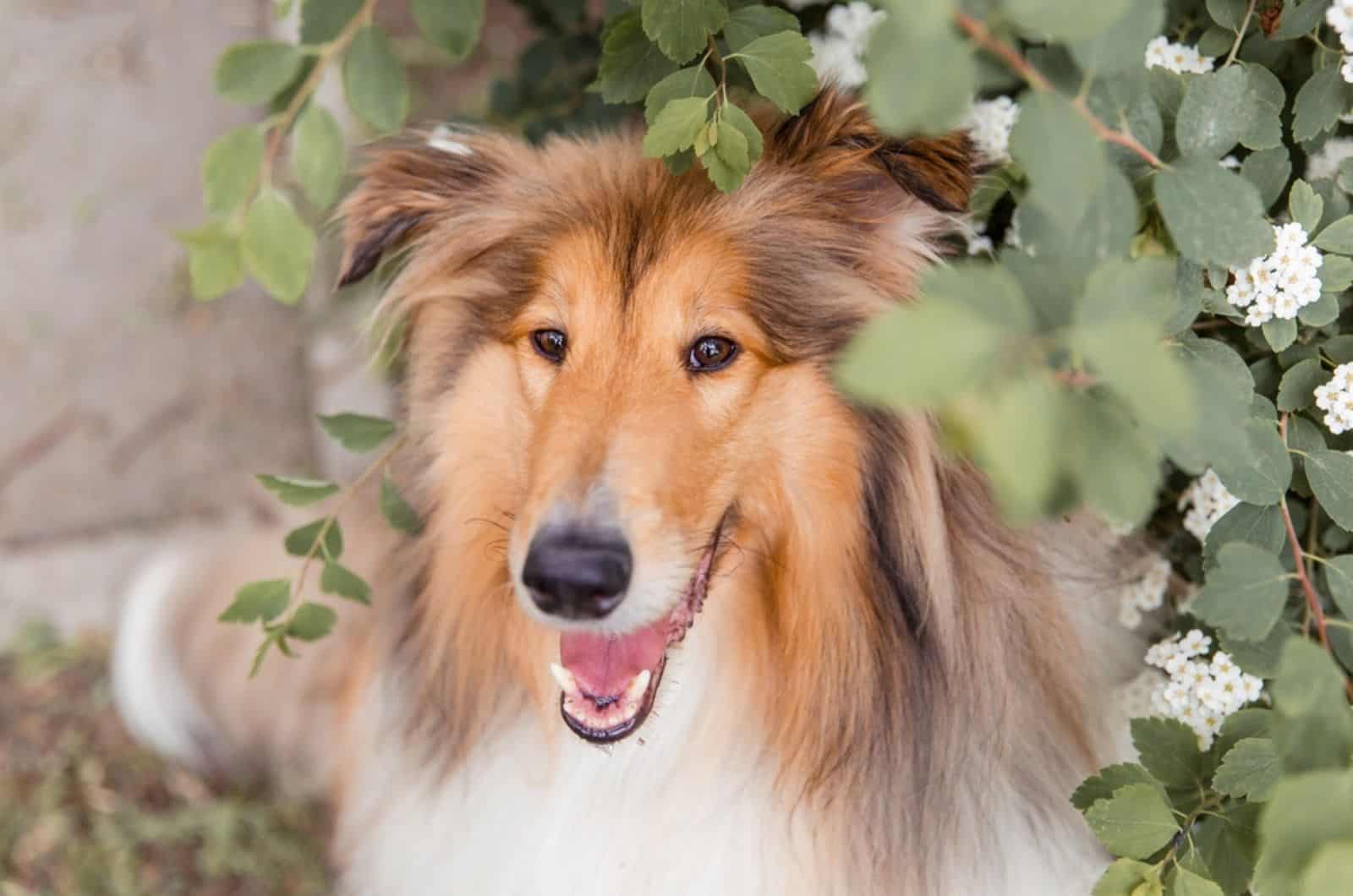
This medium to large dog breed, which amazes us with its exquisitely long coat is Scottish in origin, and was developed for herding sheep.
Collies, often known as Rough Collies or simply Collies, are calm, intelligent dogs that get along well with kids and other dogs, making them excellent family pets.
You may be certain that you have a devoted and compassionate pooch at home if you select a member of this breed. These canines are simple to socialize with and to train. They are quite intelligent; therefore, they can pick up many techniques and master a variety of jobs.
Due to their gregarious nature and activity, you will have to make time to exercise and pay a lot of attention to them. It is advised to properly socialize children at an early age because these dogs can give in to their herding tendency and begin herding anything that moves.
Collies are well-known for having a stunning double coat, so you might be curious about how much hair they shed. You must be ready to groom them frequently or take very good care of their coat. These dogs should be brushed once per week, and bathed once per month.
Rough Collies make excellent watchdogs because they can alert you if someone tries to break in. Sable, chestnut sable, darkened sable, tri-colored, harlequin merle, indigo merle, double merle, color-faced white, and white are some of the color variations of this breed.
The average length of this breed’s life is 14 to 16 years, and the maximum weights of the male and female representatives, respectively, range from 20 to 29 kg (44 to 64 lbs), and 18 to 25 kg (40 to 55 lbs).
The height limit of a male is roughly 56 to 61 cm (22 to 24 inches), whereas a female’s maximum height is 51 to 56 cm (20 to 22 inches).
11. Poodles
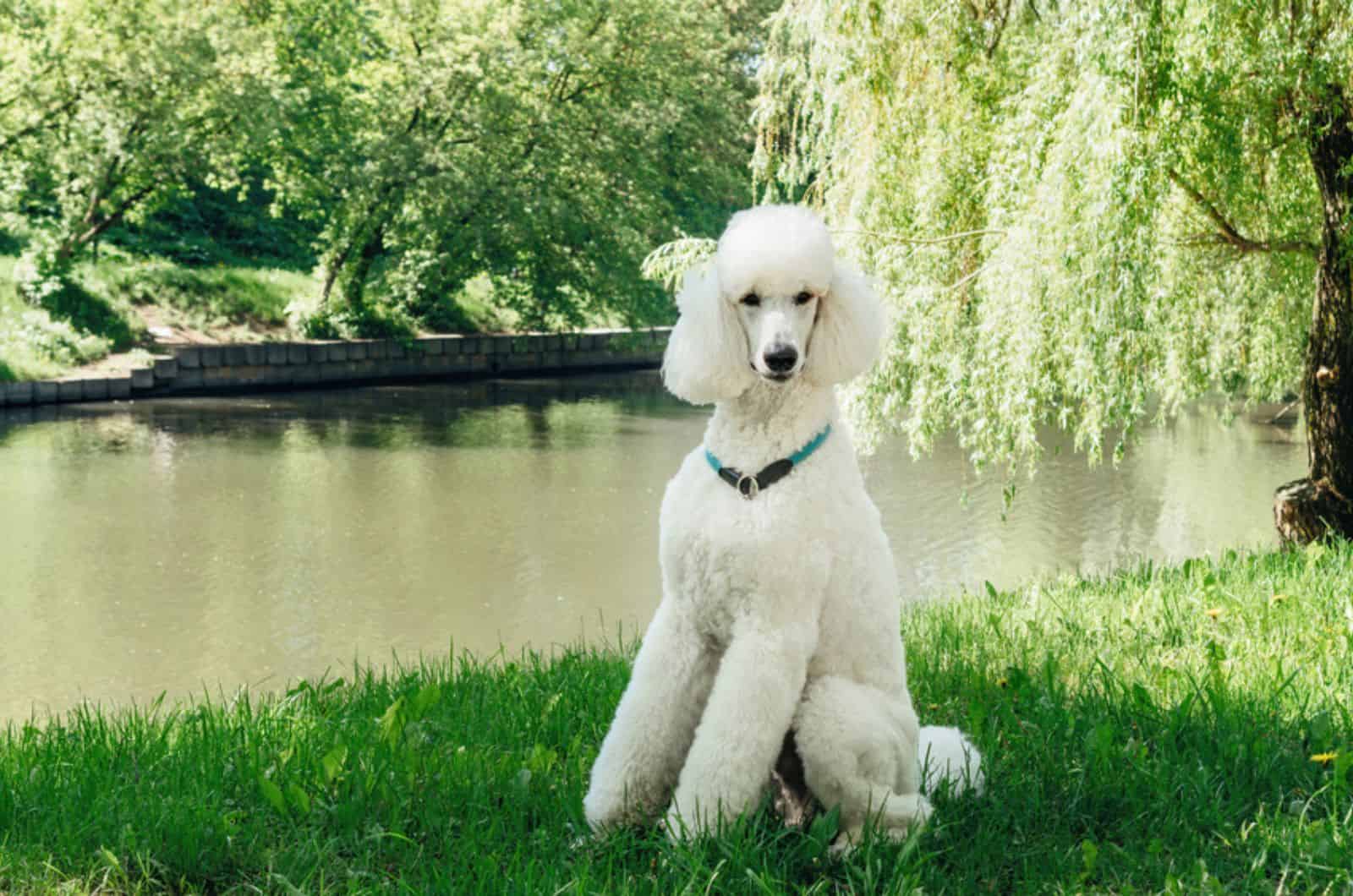
These fluffy, curly-coated canines belong to the water dog breed. Depending on size, they can be separated into four sub-breeds: Regular Poodle, Medium-sized Poodle, Mini Poodle, and Toy Poodle.
Their qualities are beyond question, even though there is still debate about whether they originated in France or Germany. These dogs are thought to be hypoallergenic, intelligent, trainable, and loyal. Additionally, they are kind to their loved ones, and they get along well with kids.
They can socialize with some other dogs, too, but you should be aware that very rough play or excessively loud noises can worry them. To ensure that interactions with other dogs are both safe and enjoyable, we advise that you instruct your adorable canine companion.
These playful, active dogs won’t like being left alone at home. If you want to own a Poodle, you must invest time in exercises and intellectual stimulation. You must use the right training methods to stop your Poodle from developing negative barking behaviors.
The shedding rate of Poodles is among the lowest of all breeds. But, you will need to brush them once a week to thrice a week, and you will need to take them for maintenance every 6 to 7 weeks.
These dogs are available in a wide range of colors and patterns, including black, white, chocolate, gray, blue Poodle, silvery, “café au lait”, silver beige, apricot, cream, and red.
This breed’s lifespan is typically 12 to 15 years.
12. Greyhounds
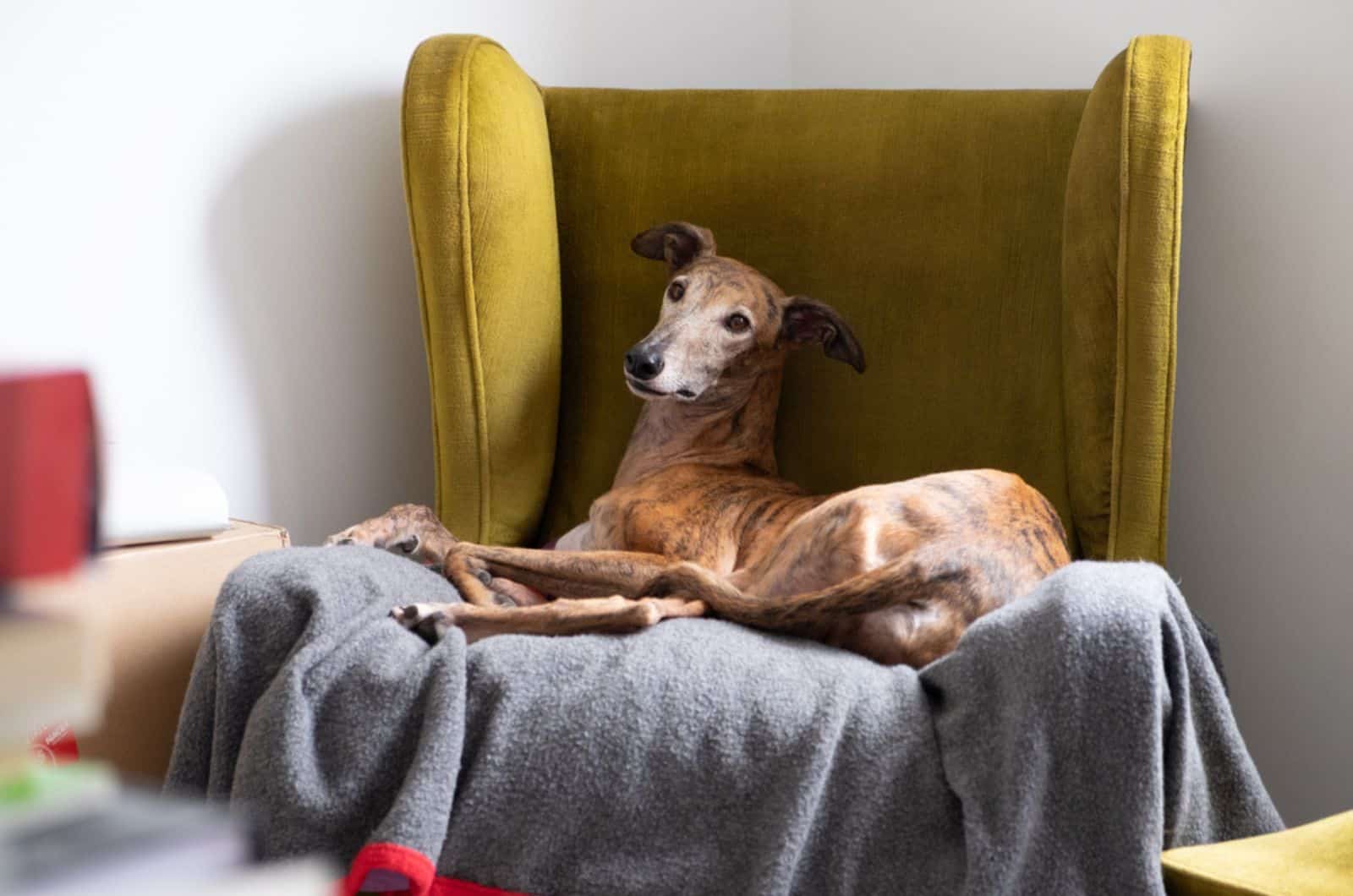
Sighthounds, also referred to as gazehounds, include dogs like the Greyhound. Instead of relying on their endurance and sense of smell, these hunting dogs utilize their speed and vision far more. They have strong legs, a lengthy tail, and a huge, S-shaped, muscular torso.
They might not always seem to be very polite, but they are calm and loving. They are non-aggressive, and hardly ever bark.
They also tolerate youngsters well, and have a level disposition. However, since your kids might want to test your paw friend’s patience, we advise that you oversee interactions between them.
Due to their mild hair loss, you can anticipate seeing more hair when the spring and fall shedding seasons arrive. They have a short, simple-to-care-for coat.
Despite being developed as hunting dogs, they enjoy lounging on the couch, making them a wonderful choice for those who live in an apartment. Playing fetch games, exercising for one hour, and lounging on the couch for many hours are all recommended. Doesn’t this sound fantastic?
These dogs are also quite adaptable. They can be trained, but bear in mind that you should only use positive reinforcement, particularly food in order to keep them motivated. Greyhounds typically don’t bark a lot.
To give them a chance to burn off some energy and sleep during the day, you might want to take them for a walk before you leave for work. Otherwise, they could become bored and pick up bad behaviors.
The optimum life expectancy of this dog breed is 13 years.
13. Irish Setters
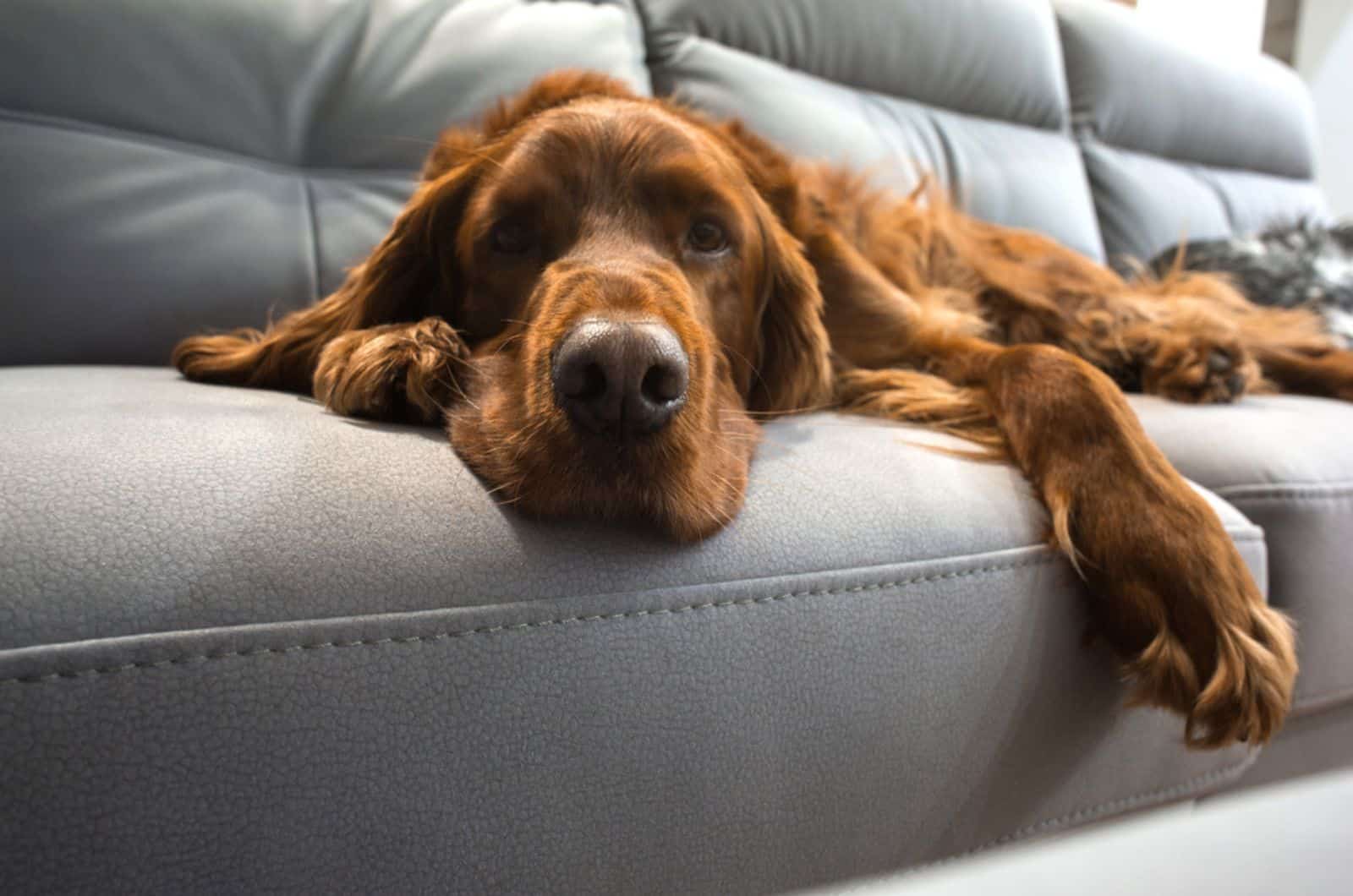
These are gundogs of the Irish Setter or “Red Setter” breed. Gundogs are unique hunting dogs bred to aid hunters in discovering and recovering doves, ducks, and quails, as we discussed above.
It seems to make sense that you would spend a lot of time enjoying fetch with your pet if you choose an Irish Setter as a companion or a service dog. These dogs are extremely intelligent and simple to train.
They receive a perfect score of 10 for expressing love to their owner, family, and friends, especially children and other canines.
To prevent future damage to your property, you might want to school them because their hunting instinct is particularly deep. This is especially important if they are still at a young age.
We want to emphasize that these canines may take years to fully grow. You will be required to brush these wonderful red-coated canines three times every week because they shed (moderately).
Take into account that Irish Setters necessitate a lot of exercise and mental stimulation due to their high level of energy. These dogs won’t be right for you if your lifestyle tends to be more “lazy.” Irish Setters are not aggressive, although they can be quite watchful.
Chestnut and mahogany are likely to come in a variety of colors. At shows, it is frowned upon for Irish Setters to have black on their coat. This breed has a 12 to 15 year lifespan on average.
Male representatives can weigh from 60 to 71 lbs, while female representatives can weigh from 53 to 64 lbs. Males of the breed can grow to a maximum height of 23 to 26 inches.
14. Portuguese Water Dog
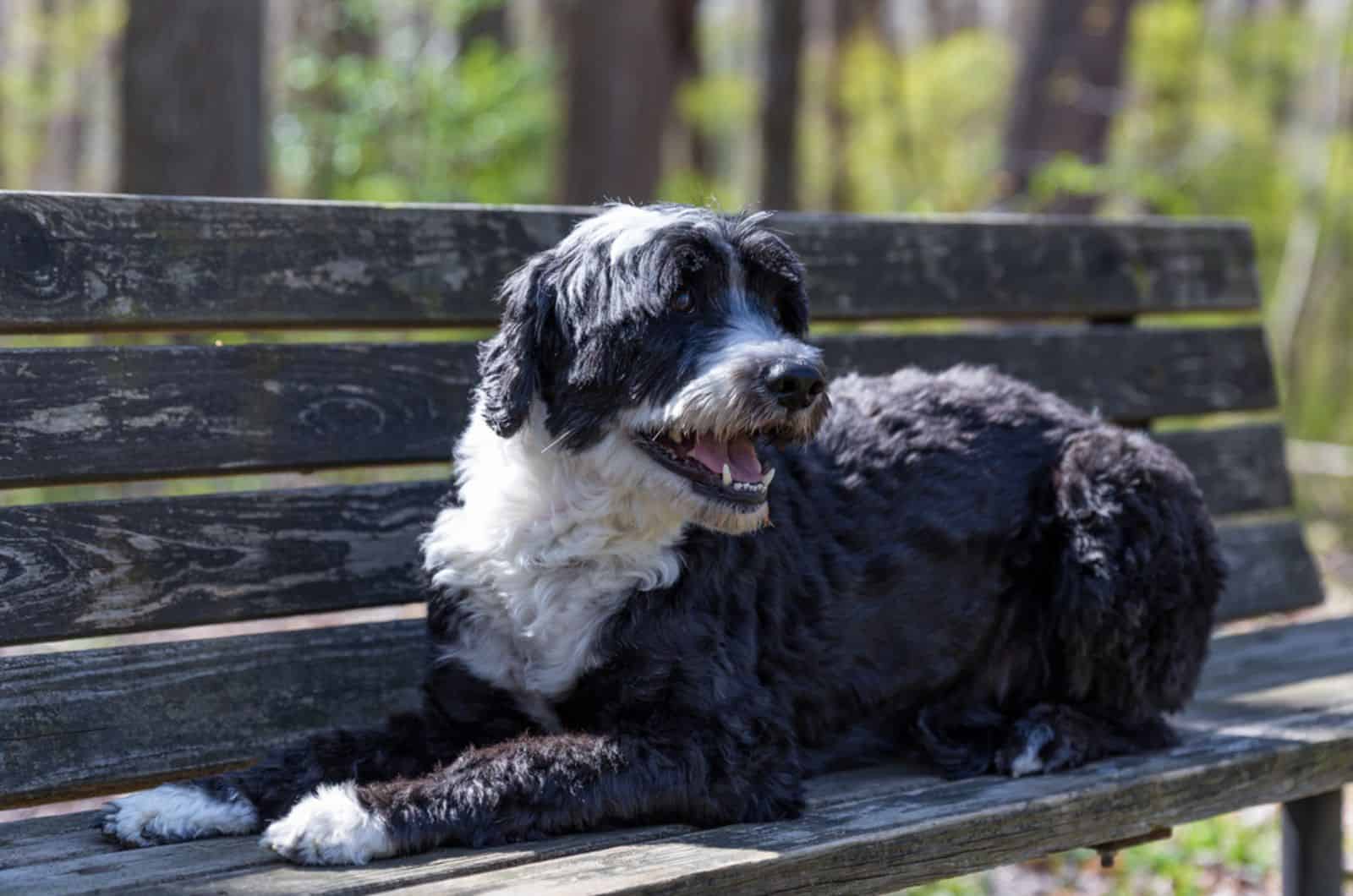
This breed was developed in Portugal’s Algarve region, and then spread to the country’s coast in which it was taught to assist fishermen by gathering fish into nets and acting as a messenger between ships, among other tasks.
Although you may not know a lot about these dogs, we are delighted to inform you that they are intelligent, loving, and simple to teach. They will therefore require consistent exercise and mental stimulation.
These canines won’t appreciate spending a lot of time at home by themselves. If you travel frequently or spend a lot of time at the office, you will need to teach them to get over any separation anxiety symptoms.
These dogs can be fantastic service dogs in addition to wonderful companions, particularly if you have young children. Other dogs can get along with them, especially if they were raised together.
These dogs don’t shed much, and even when they do, the hair is prone to become stuck in their curly coat, which is good news if you have a dog allergy. They do, however, need to be brushed and bathed frequently.
They need to be bathed either once a week or every 6 weeks. These dogs can develop into excellent watchdogs and warn you if there is any danger. They have a peculiar vocalization, but they hardly bark.
This breed has a 10 to 14 year lifespan.
15. Whippet
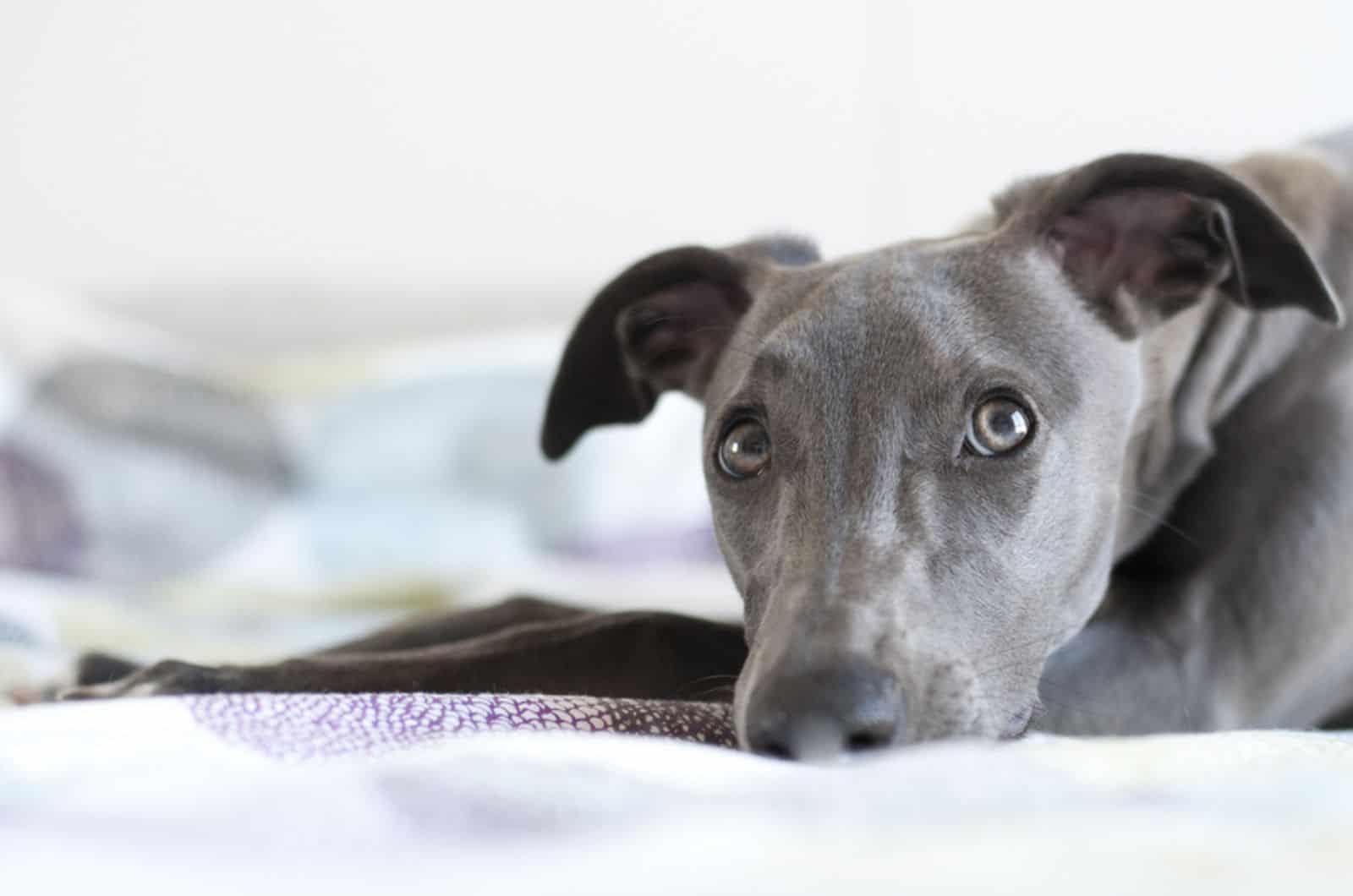
Whippets, also called Snap Dogs, are sighthounds with English origins and Greyhound ancestry, which accounts for their striking resemblance.
Whippets are often peaceful and friendly dogs that show their owner, friends, and relatives (especially children) a lot of attention.
They also behave well around other dogs. They are family dogs by nature, so to speak. Whippets have a short coat, and they shed only moderately.
They shed less than dogs with a thicker coat do. They should be handled carefully because their skin is thin and more delicate. These puppies won’t make good watchdogs because they don’t bark a lot.
Whippets are adaptable canines that may become adapted to living in an apartment. They can become obtrusive, though, if you don’t routinely exercise them because they are spirited.
These dogs live an average of 12 to 14 years. The mature canines’ maximum weight ranges from 20 to 40 lbs, and the tallest males can grow to be around 19 to 20 inches.
Female dogs can grow to a maximum height of roughly 18 to 19 inches. They are also among the healthiest dog breeds!
16. Papillon
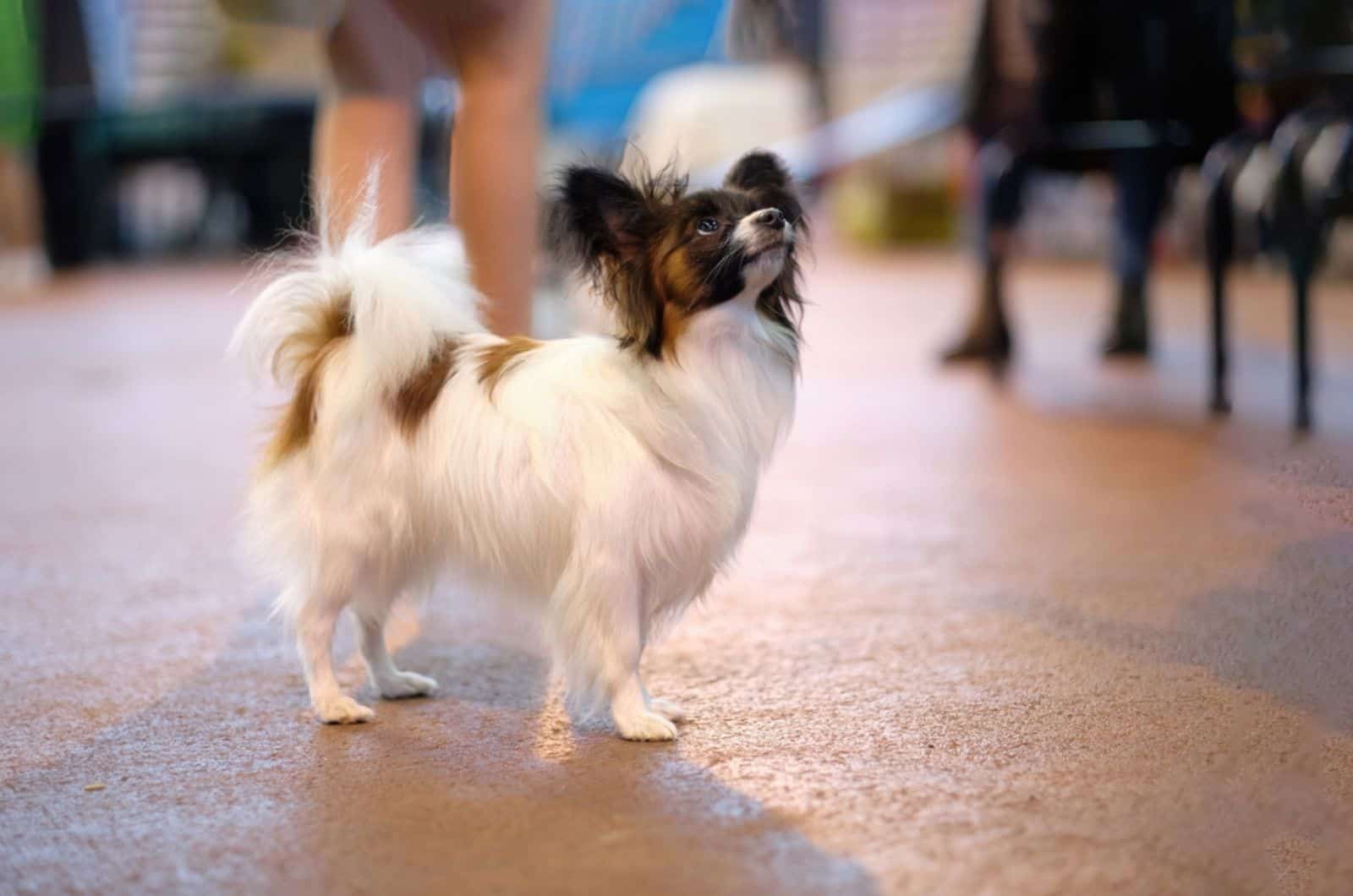
This adorable breed (one of the earliest in the family of toy spaniels) has ears that resemble butterflies. A Papillon with lowered ears is referred to as a Phalene.
Due to their affection and attachment to their master and other family members, these dogs can make wonderful family pets. Although they interact well with kids, we advise that you watch over their interactions because little breeds are more prone to injury.
These dogs demand considerate handling and attention. Despite their small size, they are incredibly trainable, and love to perform various feats for you. Since Papillons get along with cats and other animals, you do not need to be concerned when you’re around other animals.
However, it is always advised to socialize them properly. Papillons have low to moderate levels of hair loss, and regular brushing is all that is needed to maintain their gorgeous, silky coat. These canines are not renowned as nervous or barking dogs; instead, they are sociable and kind.
They are adaptable and welcoming of strangers. Any additional playtime you can provide, especially outside, will be appreciated by Papillons. This breed’s average life expectancy is 13 to 15 years.
Adult male dogs can weigh from 3.6 to 4.5 kg (8 to 10 lbs), while female dogs can weigh from 3.2 to 4.1 kg (7 to 9 lbs). The breed’s maximum height ranges from 20 to 28 cm (8 to 11 inches).
The Papillons’ coat comes in a variety of colors, including white, black and white, black, reddish and white, and fawn and white.
17. Basset Hound
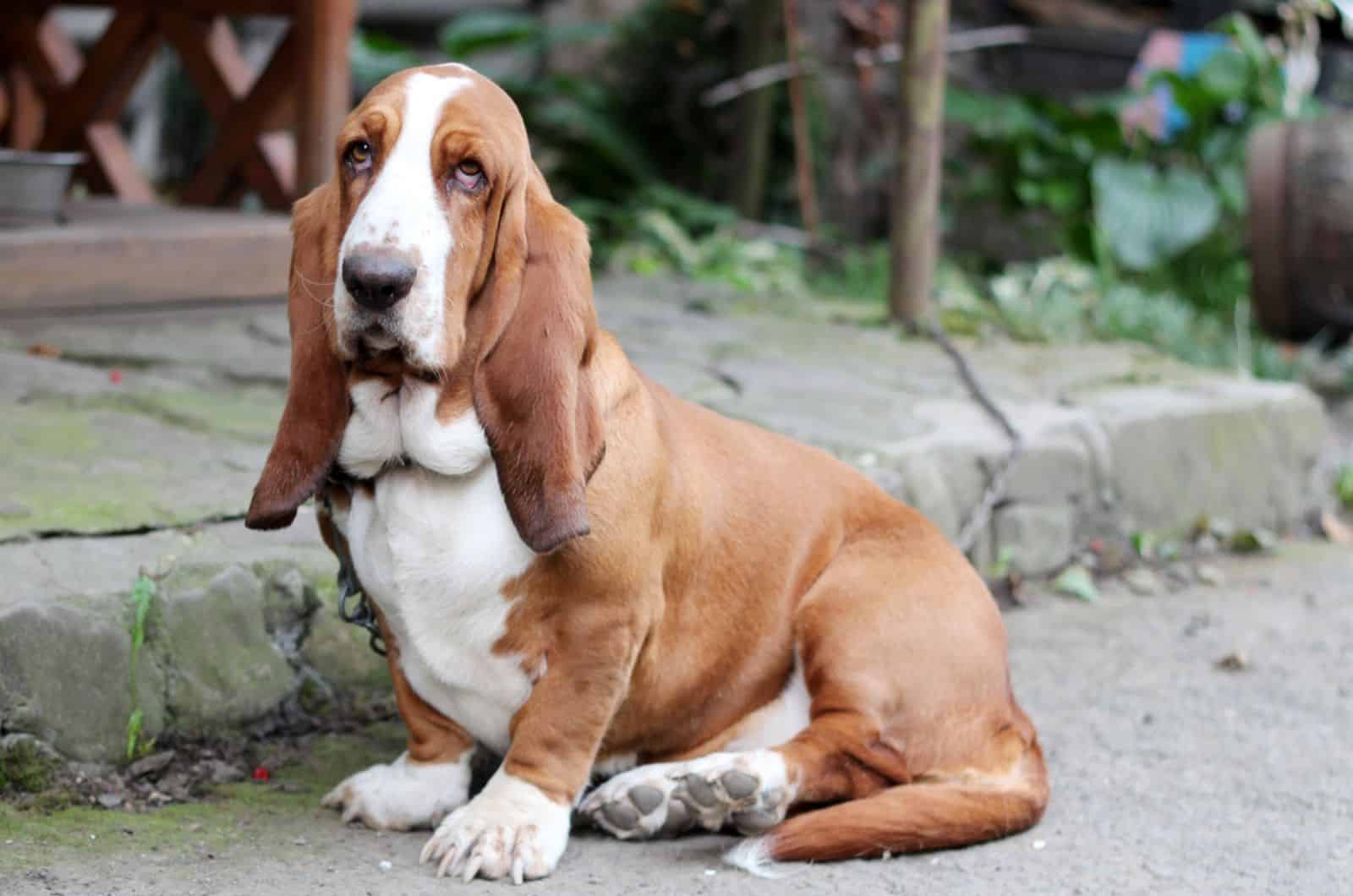
Basset Hounds are endearing dogs despite having the appearance of a sad clown due to their facial structure. They normally weigh from 40 to 65 pounds, and live for about 10 to 12 years.
Despite them being small dogs, they have sturdy feet, powerful legs, and strong bones.
Basset Hounds are devoted pets, even though that might not always be apparent. They can, however, become obstinate at times. They could bark in an unusually loud manner. However, when indoors and in the presence of familiar faces, they are rather mild.
18. Shih Tzu
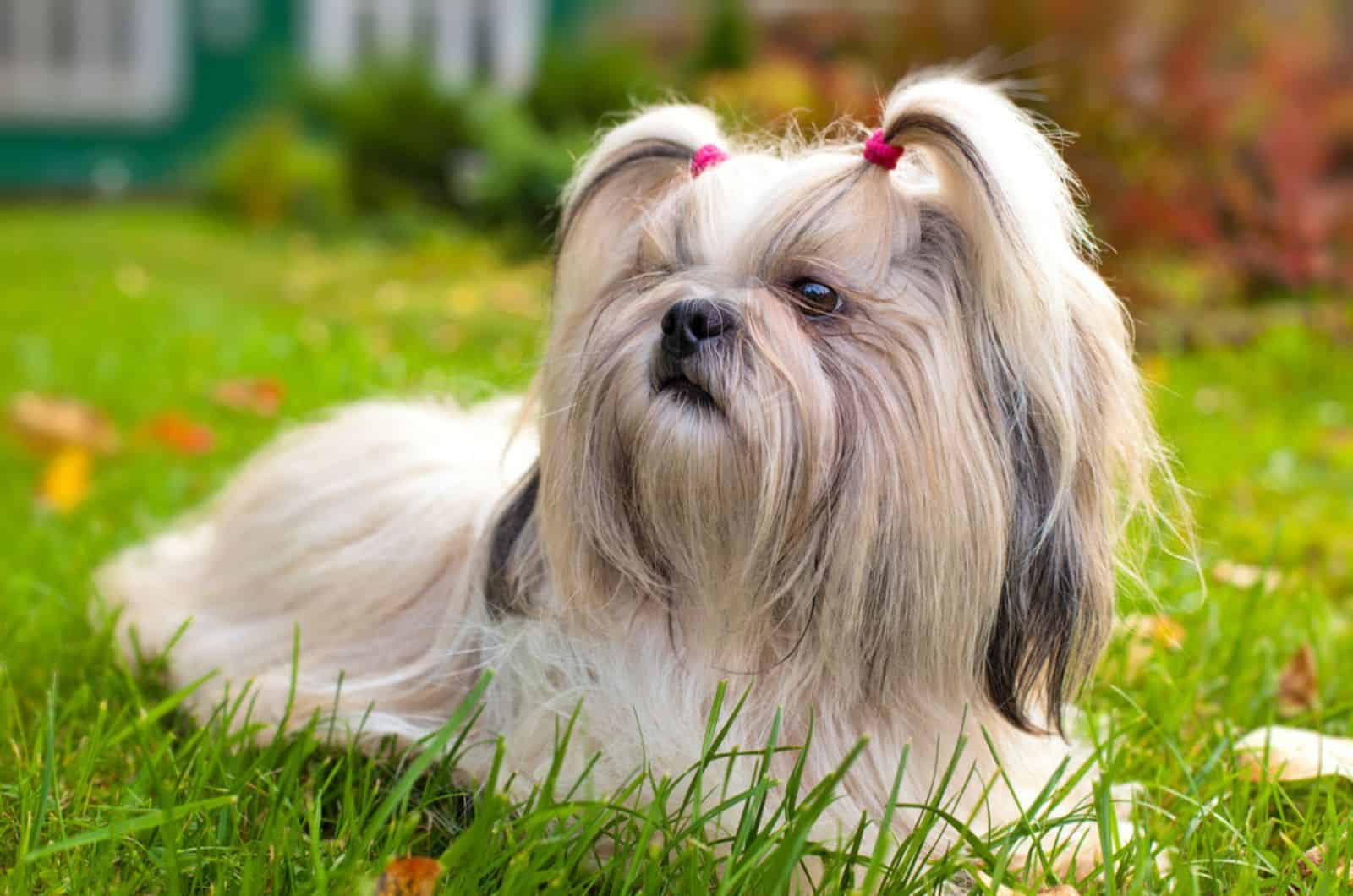
Shih Tzus, which are affectionately known as “little lions,” are a common breed in American homes, and they have been caressed for as long as 1000 years.
They were developed to reside in regal palaces, and they are perfect if you live in an enclosed environment, such as an apartment or a small house.
They typically have a lifespan of between 11 and 16 years, and they weigh between 9 and 16 pounds.
Shih Tzus prefer spending time indoors, cuddling with their family, and being a lap dog. Shih Tzus have a special affinity for young children.
Also, they take napping very seriously!
19. Labrador Retriever
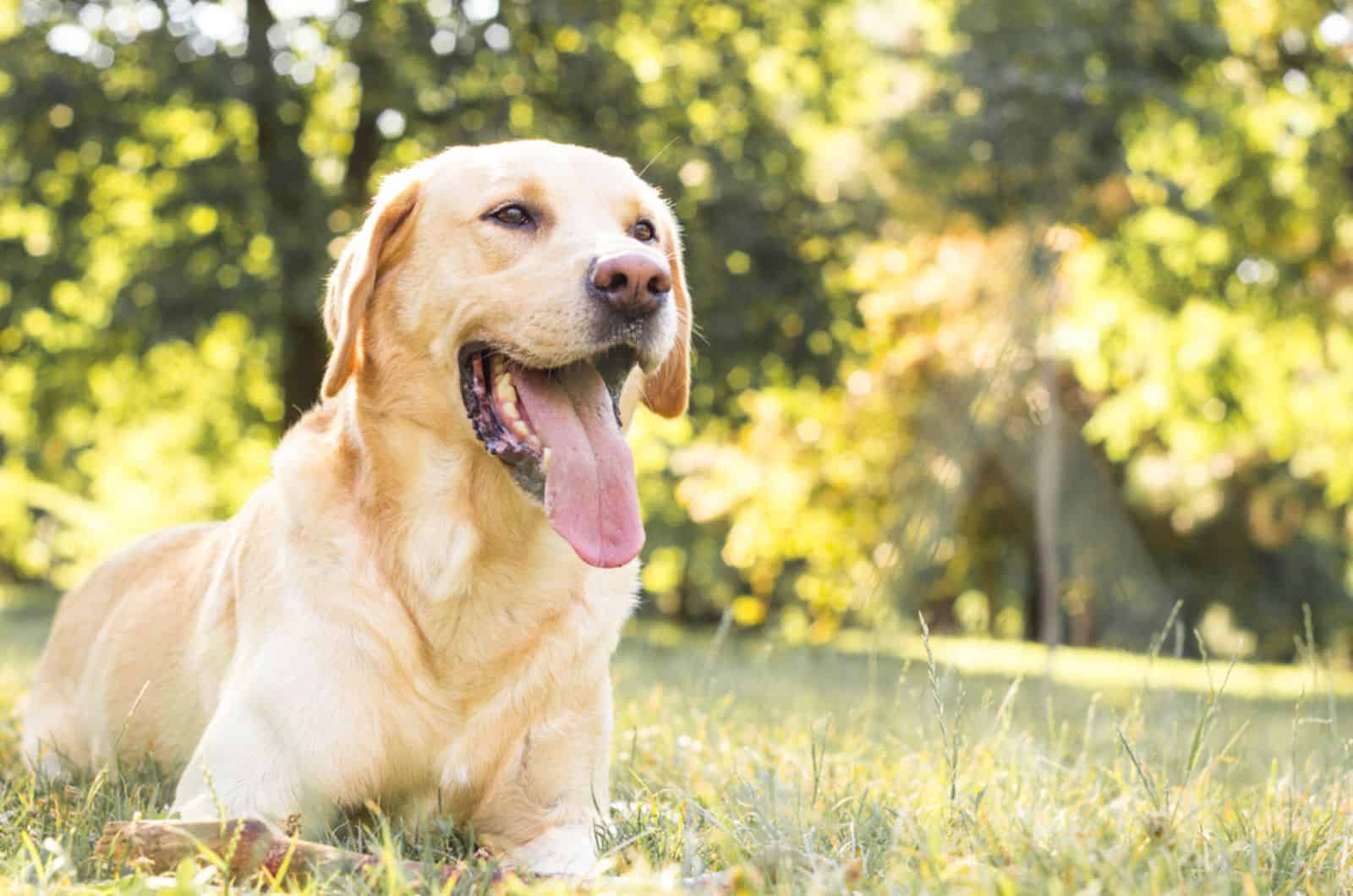
The most popular breed of dog in America is the Labrador Retriever. They are sociable, amiable, and non-aggressive dogs.
Their ability to get along with people, other animals, and kids demonstrates how outgoing they are.
Their lifespan is between 10 and 12 years, and they weigh between 55 and 80 pounds.
The Labrador retriever comes in just a few recognizable colors.
Providing them sufficient time is an important factor to take into account when bringing a Lab into your home. They need to exercise a lot, particularly jogging and swimming.
20. Golden Retriever
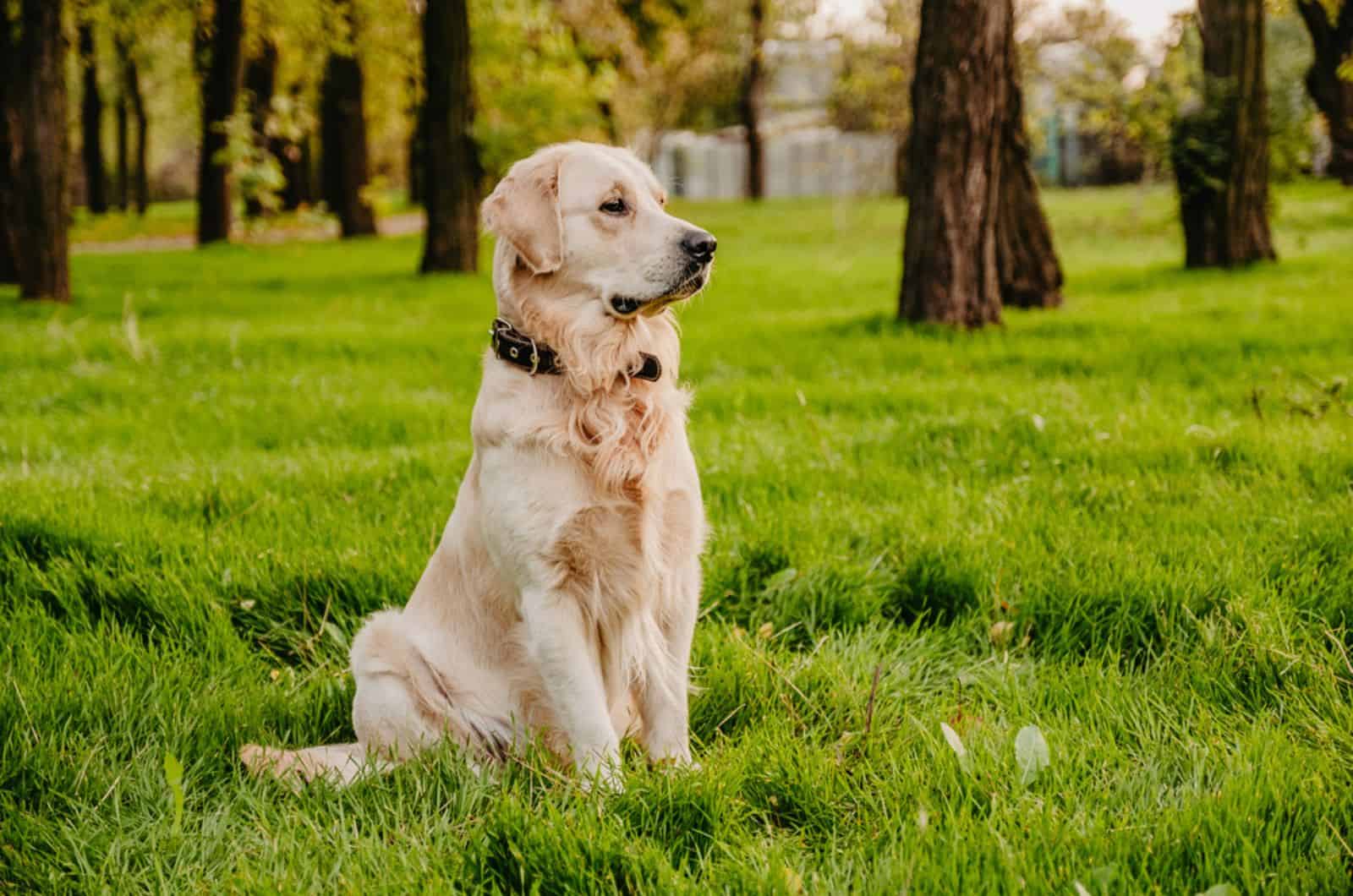
The Golden Retriever, a breed developed in Scotland in the 19th century, has a pleasant, cheerful demeanor.
They typically weigh 55 to 75 pounds, and have a lifespan of between 10 and 12 years. Due to their amiable demeanor, Golden Retrievers are usually recognized as being the ideal family dog.
They are the least hazardous dogs since they are submissive and agile. They happily interact not just with people, but also with other animals.
Due to their ease of training, Golden Retrievers are frequently utilized as drug-sniffing dogs, water rescue dogs, disaster rescue dogs, and guide dogs for the blind.
They have a history of biting when they find themselves being anxious, even more often than Pit Bulls; however, they usually have a friendly nature.
21. Labradoodle
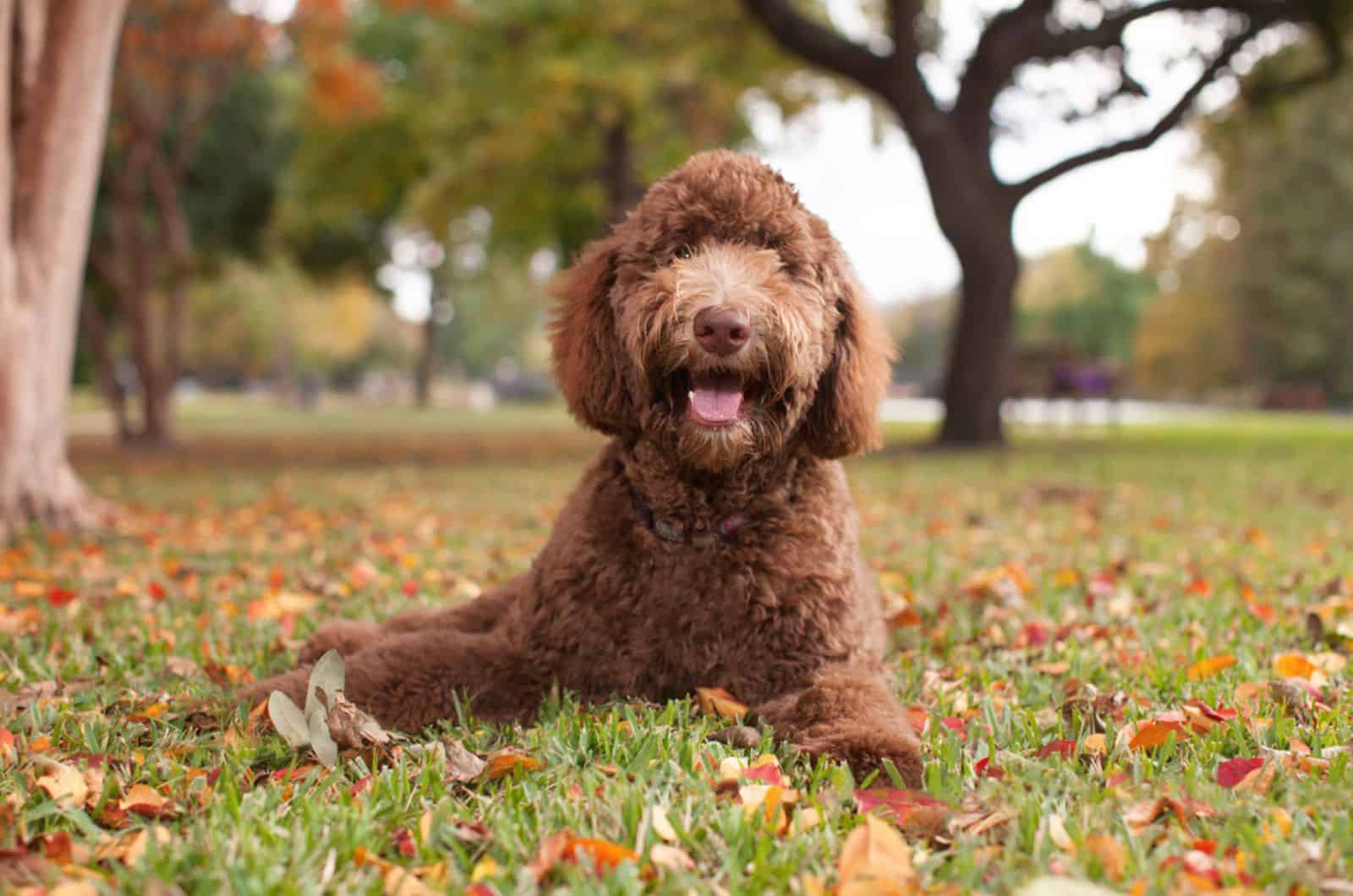
Poodle and Labrador Retriever hybrids are known as Labradoodles. Labradoodles were first created as hypoallergenic guide dogs, but they have swiftly gained a lot of popularity among Americans.
They are among our list’s least violent dog breeds. They weigh approximately between 50 and 65 pounds, and have a lifespan of 12 to 15 years.
People-friendly breeds include Labradoodles. They are somewhat active, and require modest daily physical activity, like going for a walk or playing games.
The Labradoodle is clever and responsive to instructions. If properly trained, they could become wonderful family dogs.
Designer dogs called Doodles have a Poodle parent. Poodles are renowned for being loving animals. In the last 10 to 15 years, these dogs have been appearing in smaller sizes.
They rank highly among the smartest dog breeds, yet they are typically reserved around strangers. This demonstrates that when Poodle mixes are bred ethically, these features are passed down.
Doodles are frequently bred to be sociable, family-friendly dogs with wonderful personality.
22. Goldendoodle
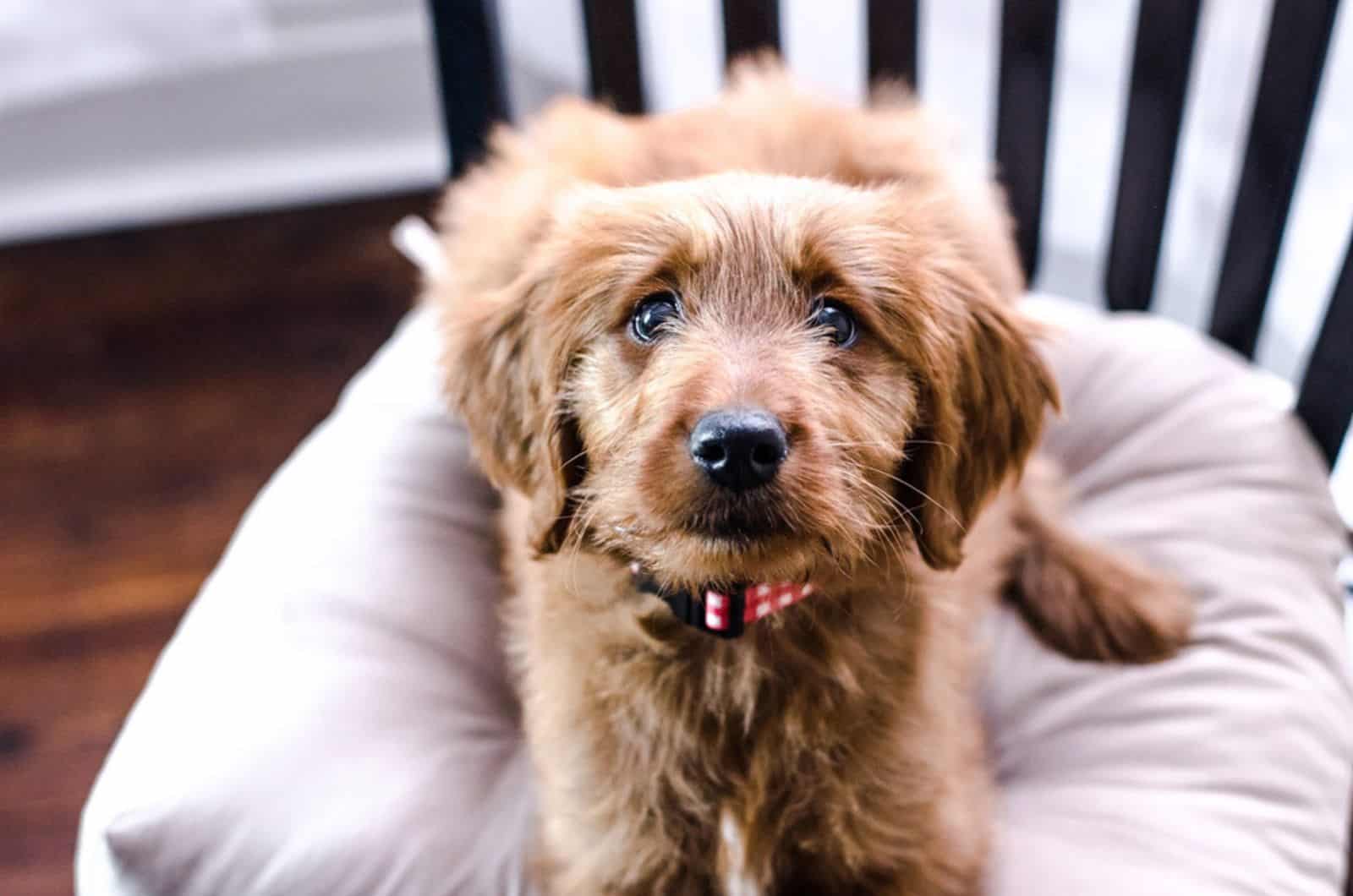
Designers of the Goldendoodle dog sought to meld the endearing attributes of the Golden Retriever well with the low-shedding characteristics of the distinctive Poodle.
The outcome seems to have been a medium-sized dog with a scruffy coat that sheds very little, while having sociability and an eagerness to please.
Goldendoodles are excellent family dogs since they are friendly and get along well with other animals as well as children.
Just as Labradoodles, these dogs have been recently bred in smaller variants.
They would rather try to befriend a newcomer than scare them off since they are simply too amiable to make ideal security dogs or watchdogs.
23. Corgi
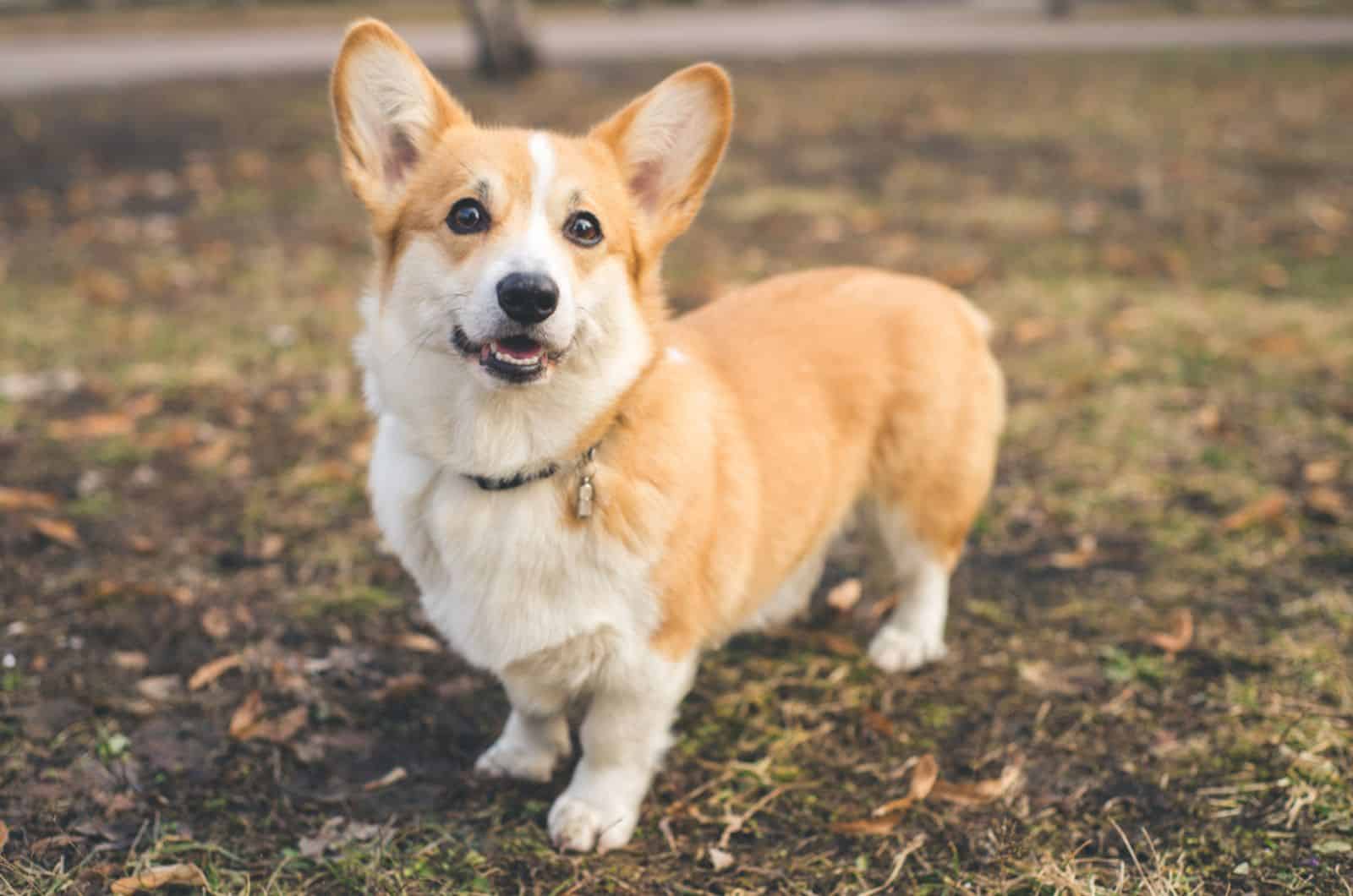
The Corgi’s abundance is the first characteristic that dog lovers discover about this breed. These Pembroke pups act larger than life, and they are eager to herd animals and people if you let them. Perhaps they are overcompensating for their short legs and tiny feet.
You should appreciate the talkativeness of Corgis. Yes, you can teach them to avoid barking if you want, but they love to inform you about what’s happening either inside or outside the house.
These active dogs are anything from depressed. They are energetic and fun-loving, and a dog lover who has a Corgi will have plenty of tales and adventures to tell their friends.
They come in various coat colors, and trust me… when it comes to this dog breed, it is hard to choose just one puppy. They effortlessly and easily get under your skin with their beautiful personalities.
24. Boston Terrier
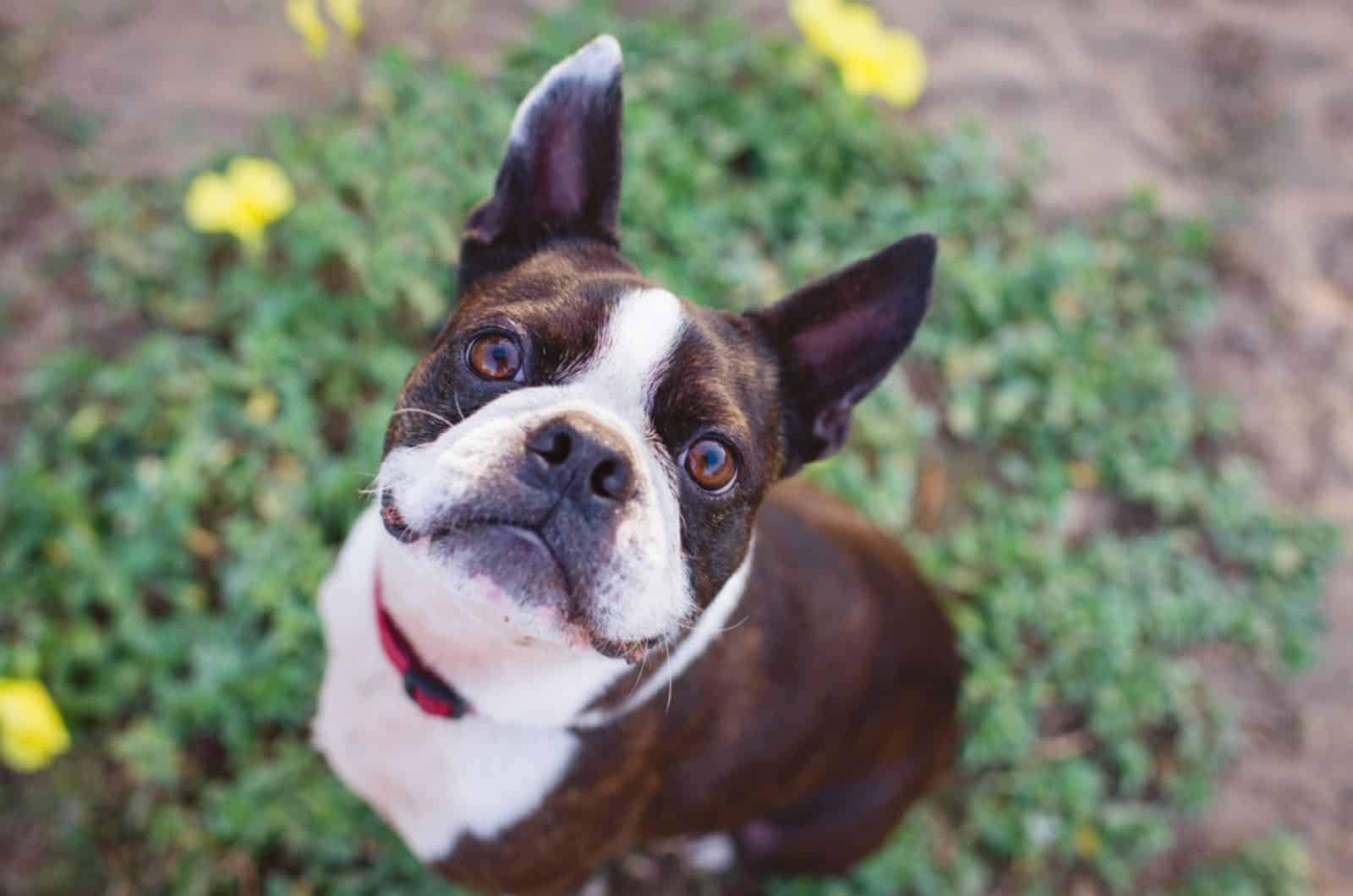
Anywhere they go, the Boston’s friendly disposition quickly wins over other puppies and their owners.
Playdates will fill up your social calendar, so it’s a positive idea that your Boston will always look party-ready in its instantly identifiable “tuxedo” coat.
Even though they have a long list of friends and playmates, you will always remain their best friend, and you are the only person they would rather cuddle with at the conclusion of the day.
Because of their outgoing personalities, Boston Terriers can be overpowering for shy or emotional dogs, so it’s crucial to socialize your puppy and train it on how to interact politely with other dogs. Fortunately, they are clever and eager to learn, making training them simple.
Read more about: Brown Boston Terrier
25. French Bulldog
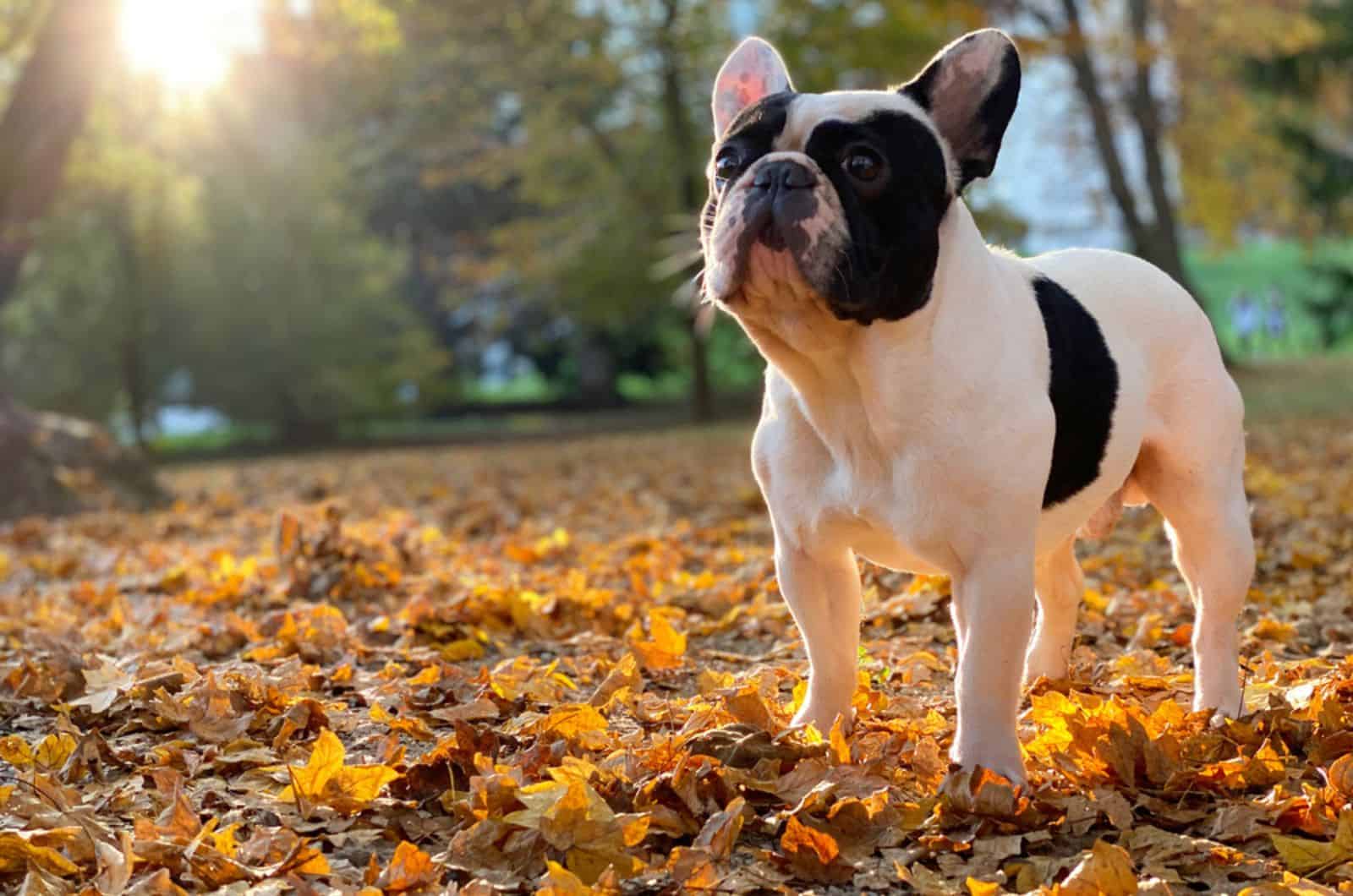
The French Bulldog seems to be the perfect example of a tiny dog with something like a huge personality. It is eccentric, energetic, and brimming with energy. Children love playing with them because of their small stature and fun-loving personality, but as with all breeds, close supervision is required.
French Bulldogs can easily fit in with families, whether or not there are kids present. French Bulldogs are eccentric and playful dogs that don’t often bark.
They may interact well with other canines, and even felines with proper exposure and socialization.
Their love of human interaction means that you should plan enough time at home for them as French Bulldogs are known to be prone to separation anxiety.
Read more about: French bulldog colors
26. Brussels Griffon
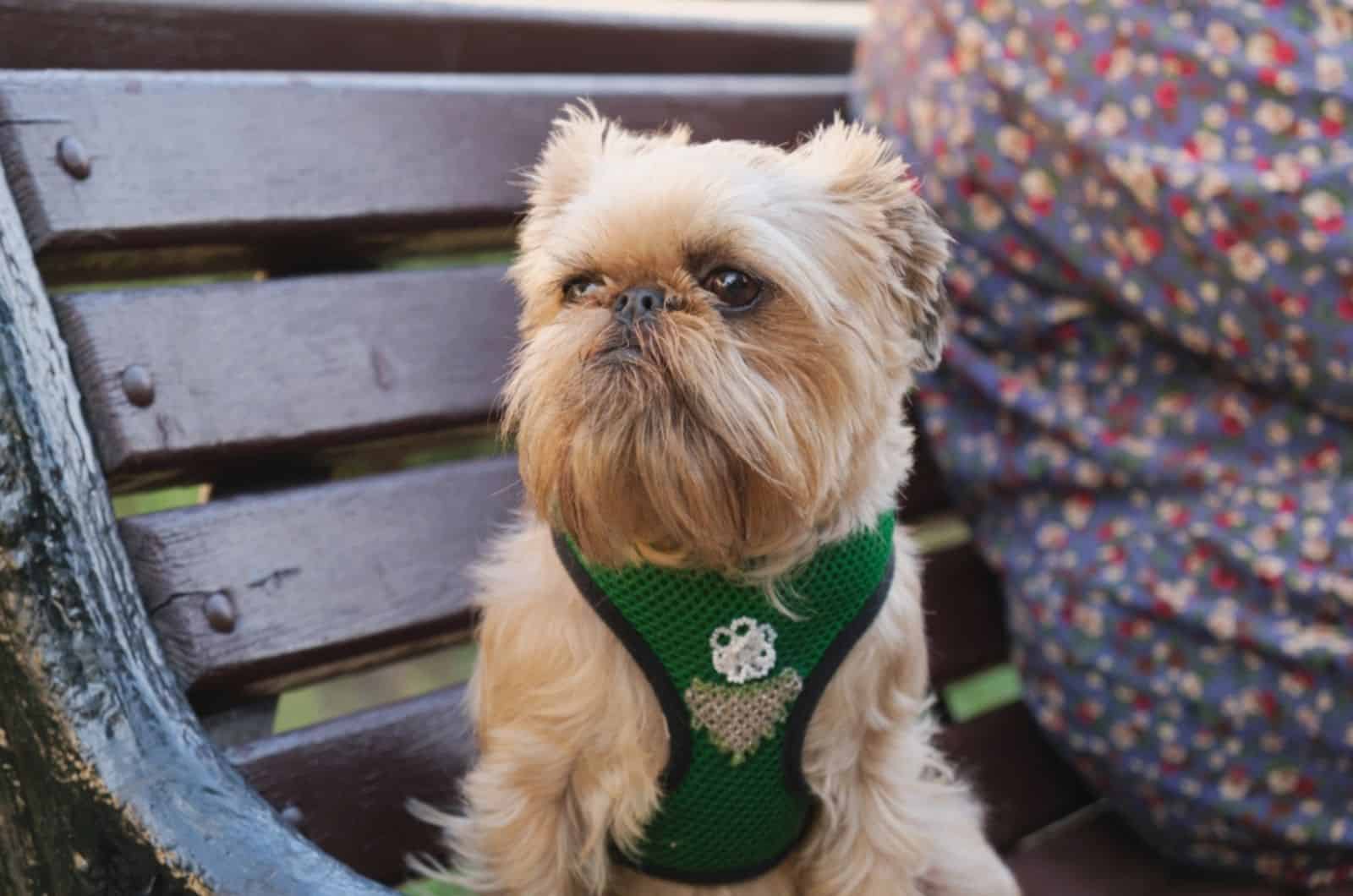
The Brussels Griffon seems to be a wonderful little friend with lots of personality.
This breed is a wonderful family dog since it is intelligent, obedient, eager to please, and prepared for fun playtime.
There are two different coat kinds for Brussels griffons: the smooth coat, which needs minimal grooming, and the rough coat, which has a distinguishing beard and scruffy hair, and requires more grooming.
The Brussels griffon, like many flat-faced dogs, is susceptible to a variety of respiratory issues, and there are also a few other health issues to be aware of before acquiring one.
Overall, however, this breed is a low-maintenance dog and a caring friend, making it clear why it is so well-liked among the least aggressive dog breeds.
27. Vizslas
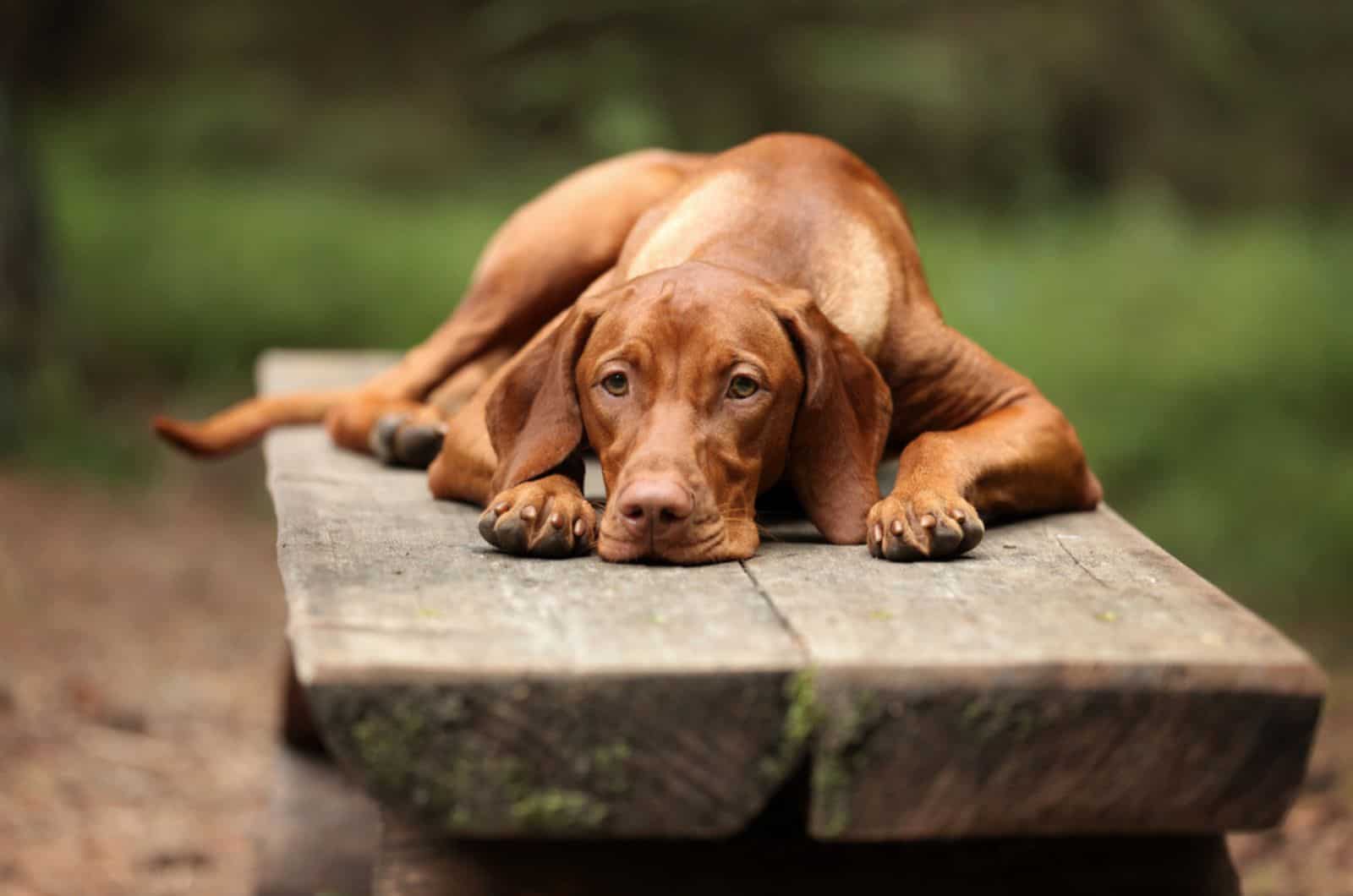
According to the hunting objectives for which it was produced, this breed’s name, which translates to “searcher” or “tracker” in Hungarian, has its origins there. You may have spotted its cute, sleek, and shiny coat, which gives it an air of elegance.
These dogs are incredibly loving and devoted to their family. They communicate well with other dogs, and are good with kids.
You won’t likely run into any issues if you keep them with some other canines or even with cats. However, if you have creatures like bunnies or birds, your paw friend’s hunting propensities can emerge.
Vizslas are playful, spirited, and active canines. You’ll need to give your dog a lot of engaging activities and workouts. Like other dogs, Vizslas naturally get calmer as they age; however, this varies from dog to dog.
You’ll be relieved to learn that these dogs don’t have a reputation for shedding. They shed in a low-to-moderate range. However, you can still use a soft bristle brush to maintain and remove any dead hair from your dog’s lovely coat.
Due to their intelligence, Vizslas require both mental and physical activity. If left unattended, they could start barking excessively.
They are incredibly trainable due to their intellect and desire to please their owner. If you choose to train your canine companion, remember to be gentle, persistent, and patient.
Golden Rust, Golden, and Red Golden are coat colors available for Vizslas. Overall, however, this breed is a devoted and caring friend, making it clear why it is so well-liked.
Final Word
Picking only one among the least aggressive dog breeds is a difficult task! But, there are many things you should take into consideration before picking the perfect one for you.
The most important thing is to ask yourself: does this dog fit my lifestyle?
It will not be simple to pick the ideal dog for your wants and way of life. Considerations for raising a dog include the breed, the life expectancy, the temperament, and the living conditions that you can provide for them.
However, the aforementioned elements are seen to be crucial, and will support your decision.
The breed is a crucial consideration when choosing a dog as a service animal as well as a pet because some breeds tend to be more or less lively, more or less easygoing and trainable, and more or less prone to specific health concerns.
In this post, we have examined the concept of “breed” in relation to the process of selecting a dog. Additionally, we want to focus on breeds that are more well-liked than others since they are thought to be less violent.
We hope that you have found ‘the one’ for you!
